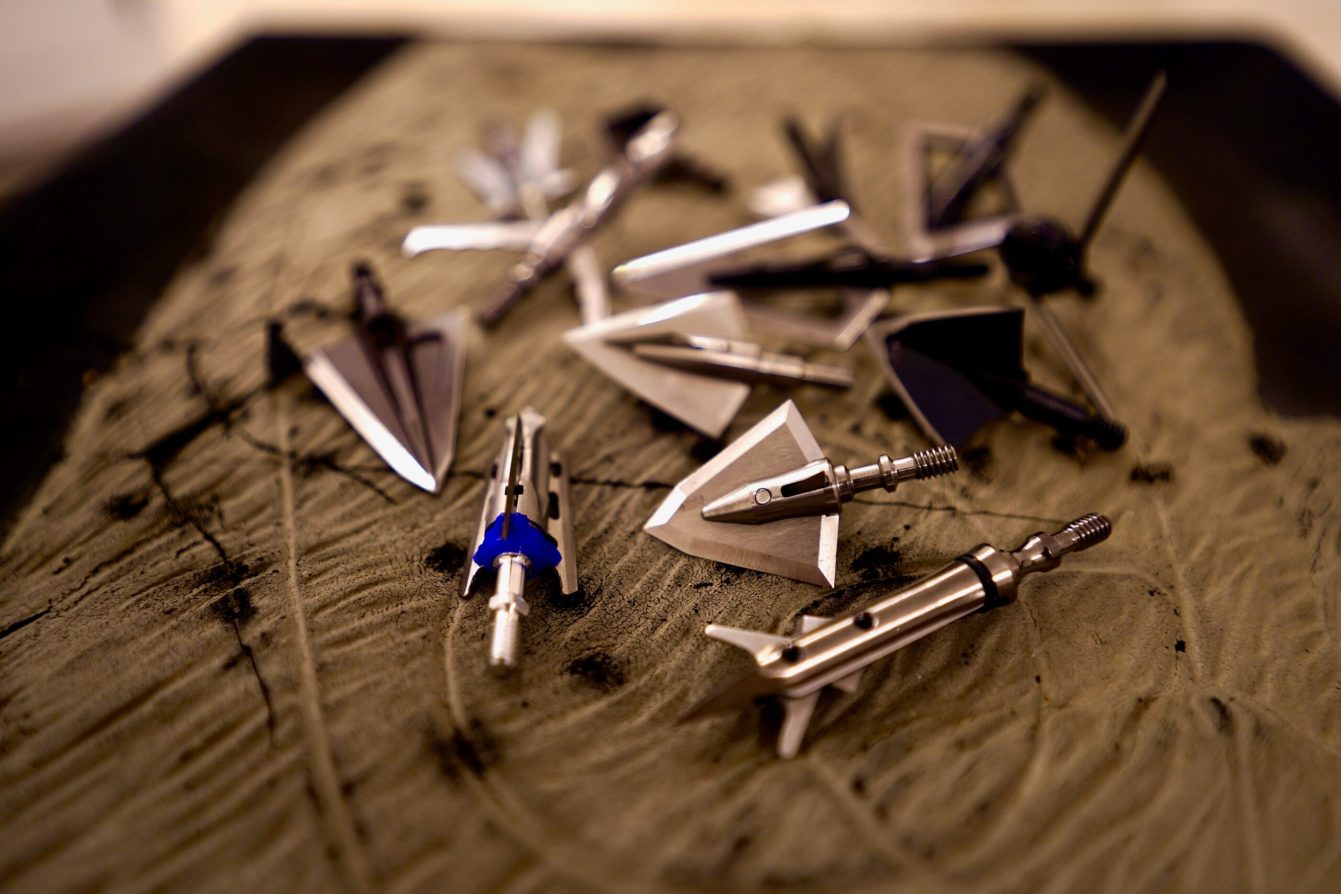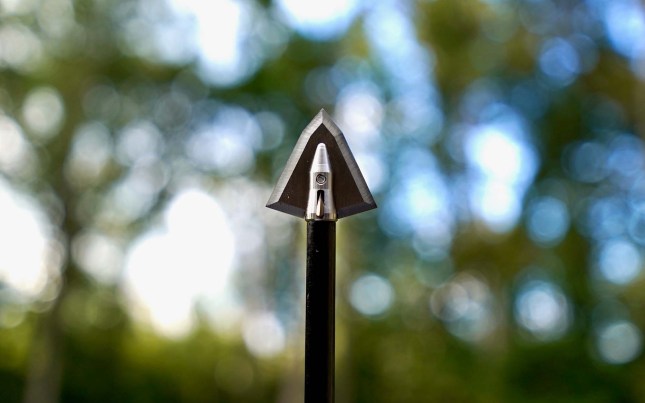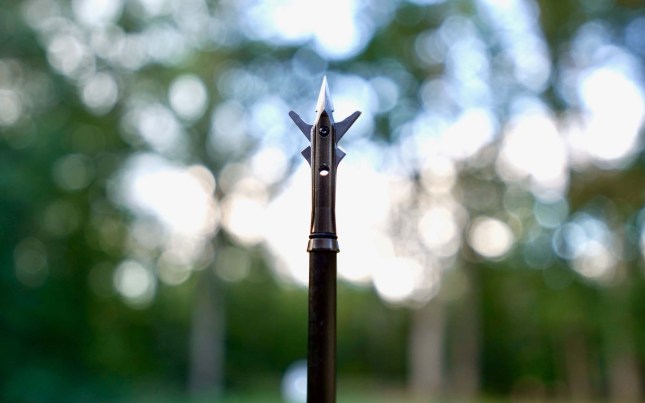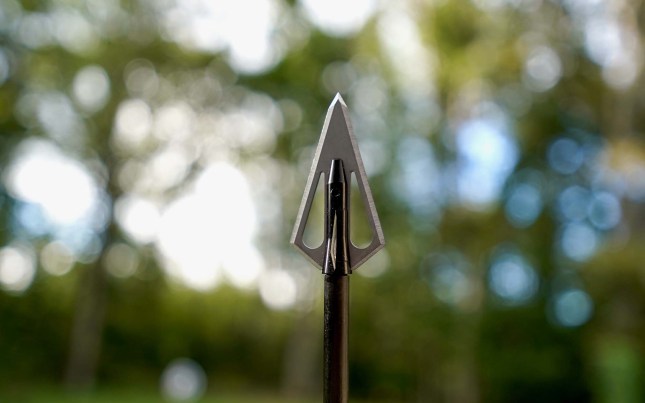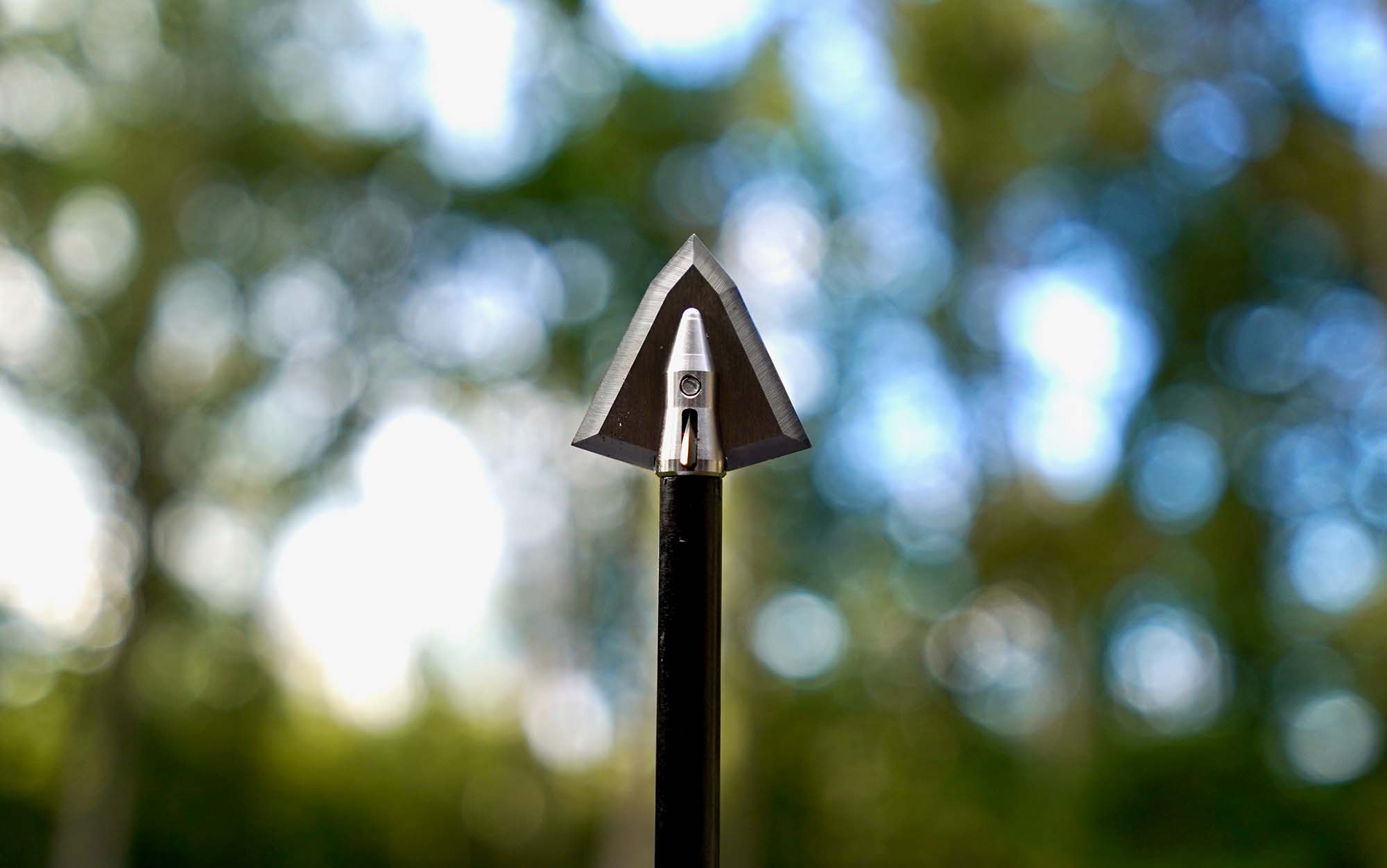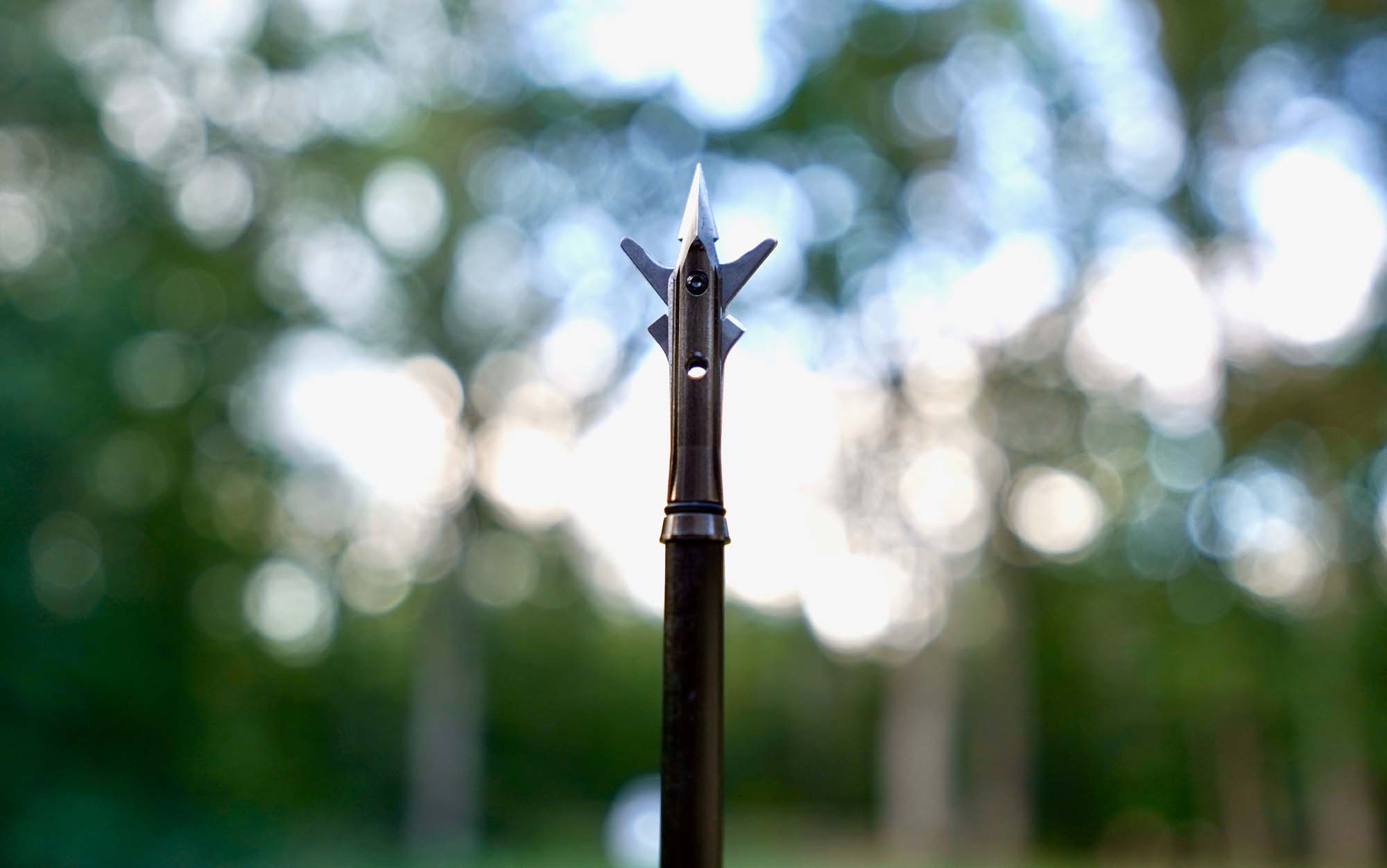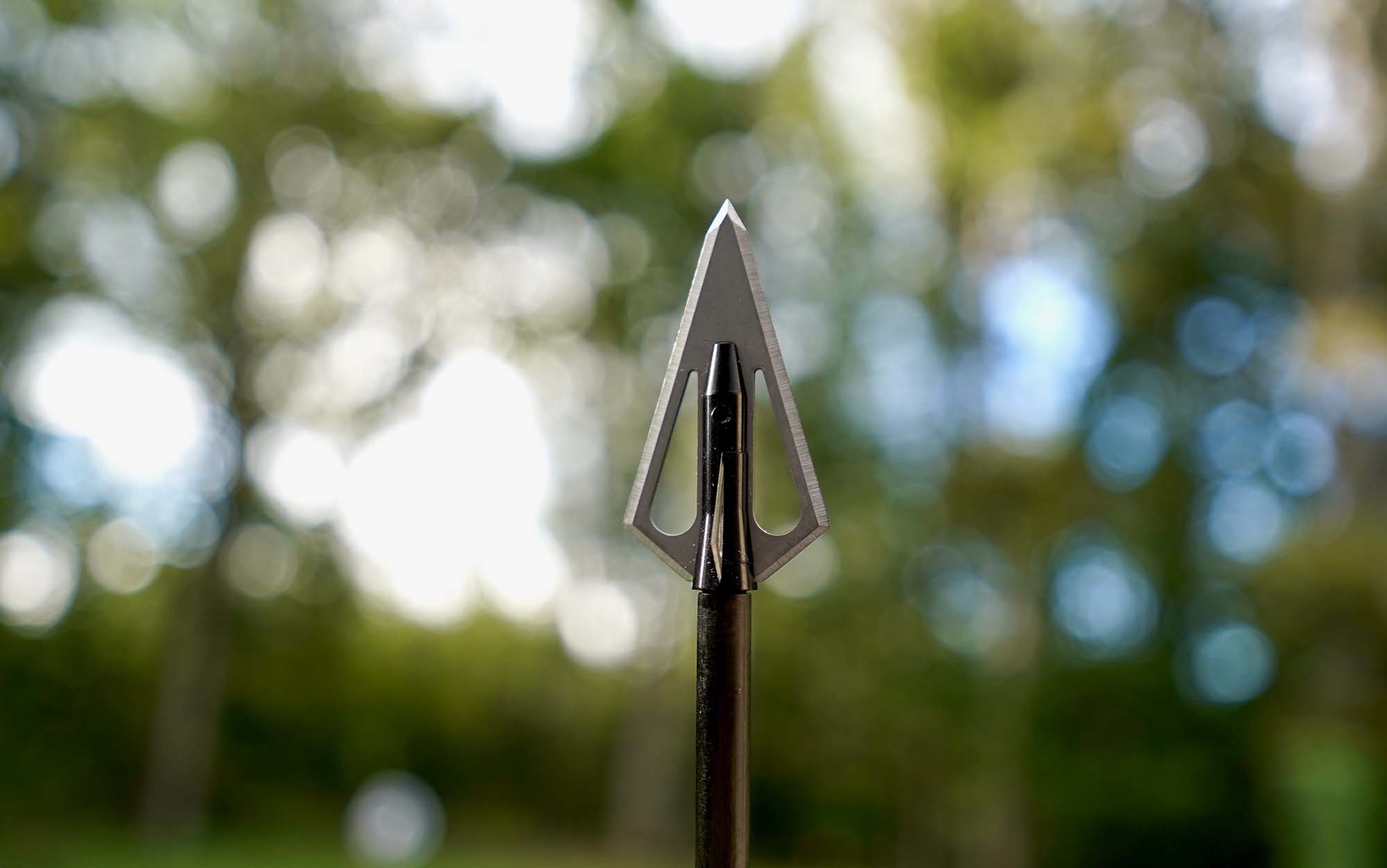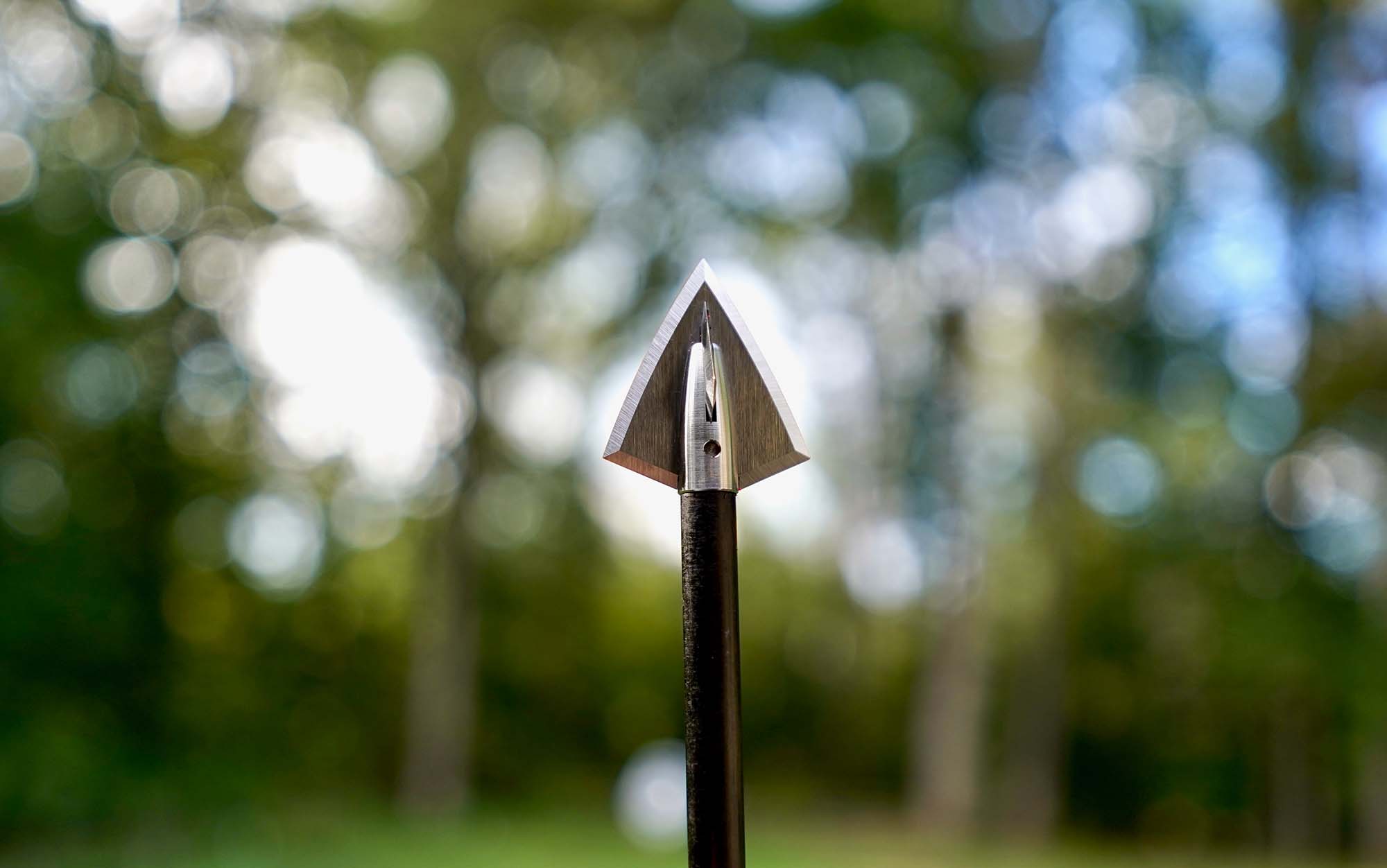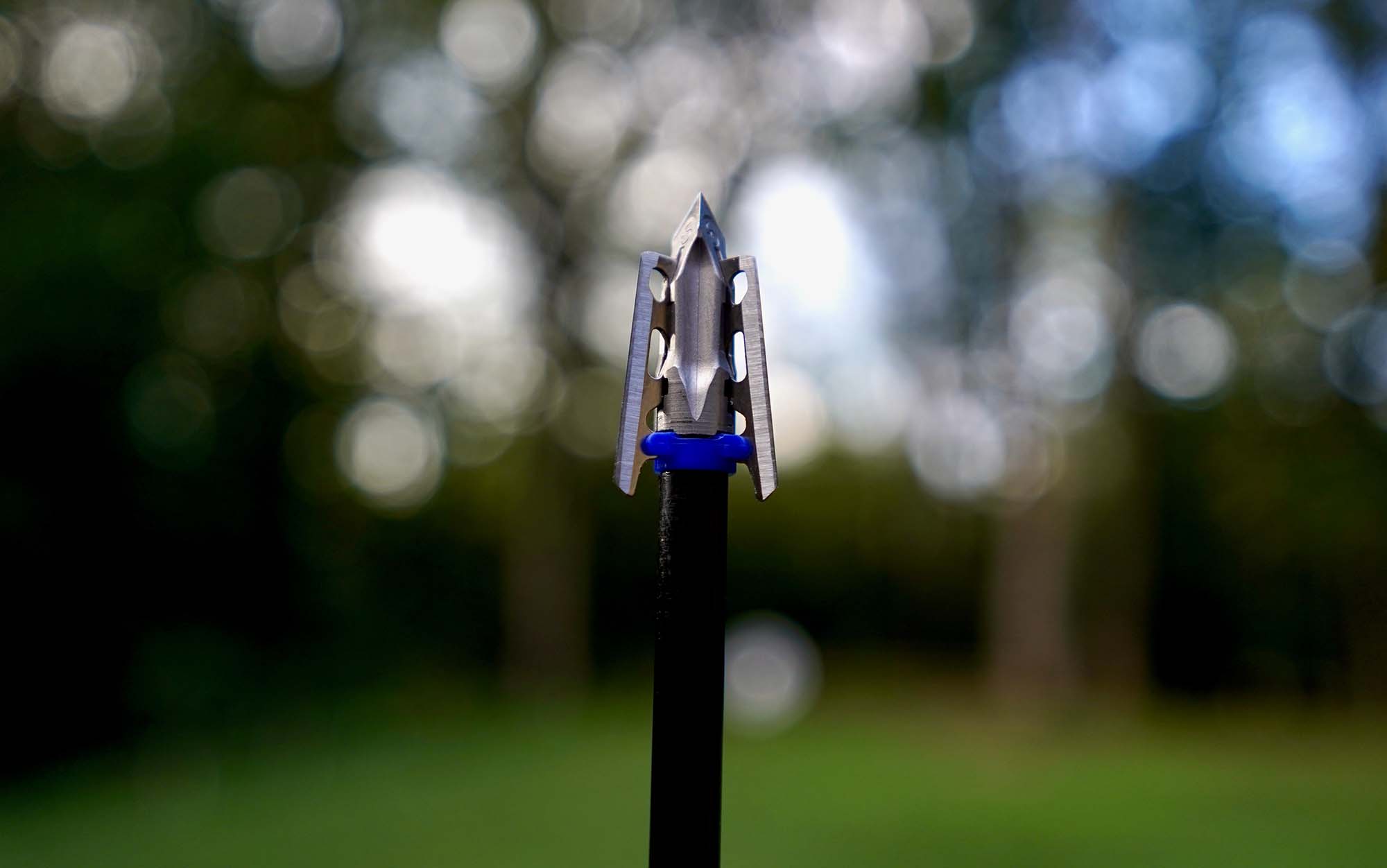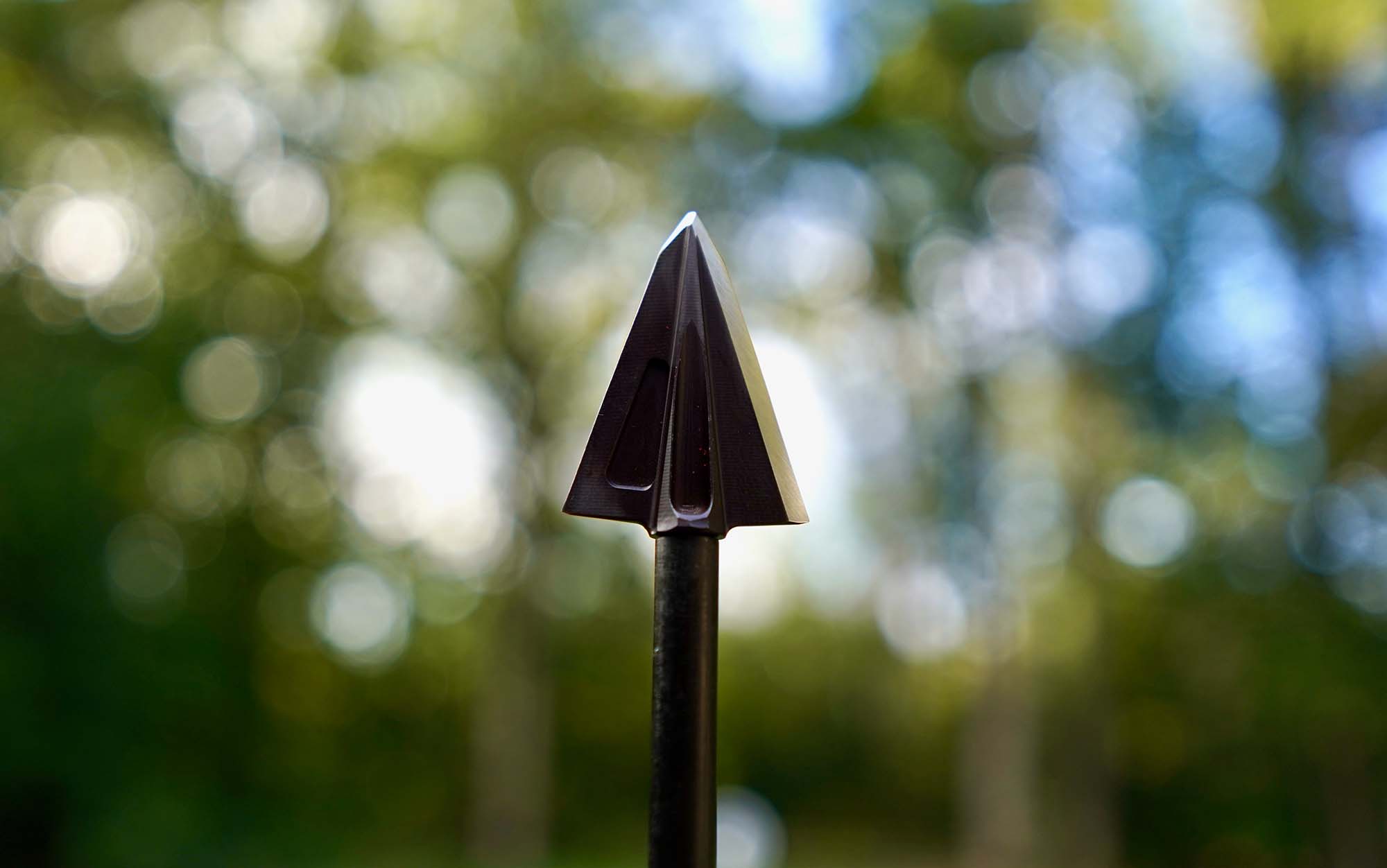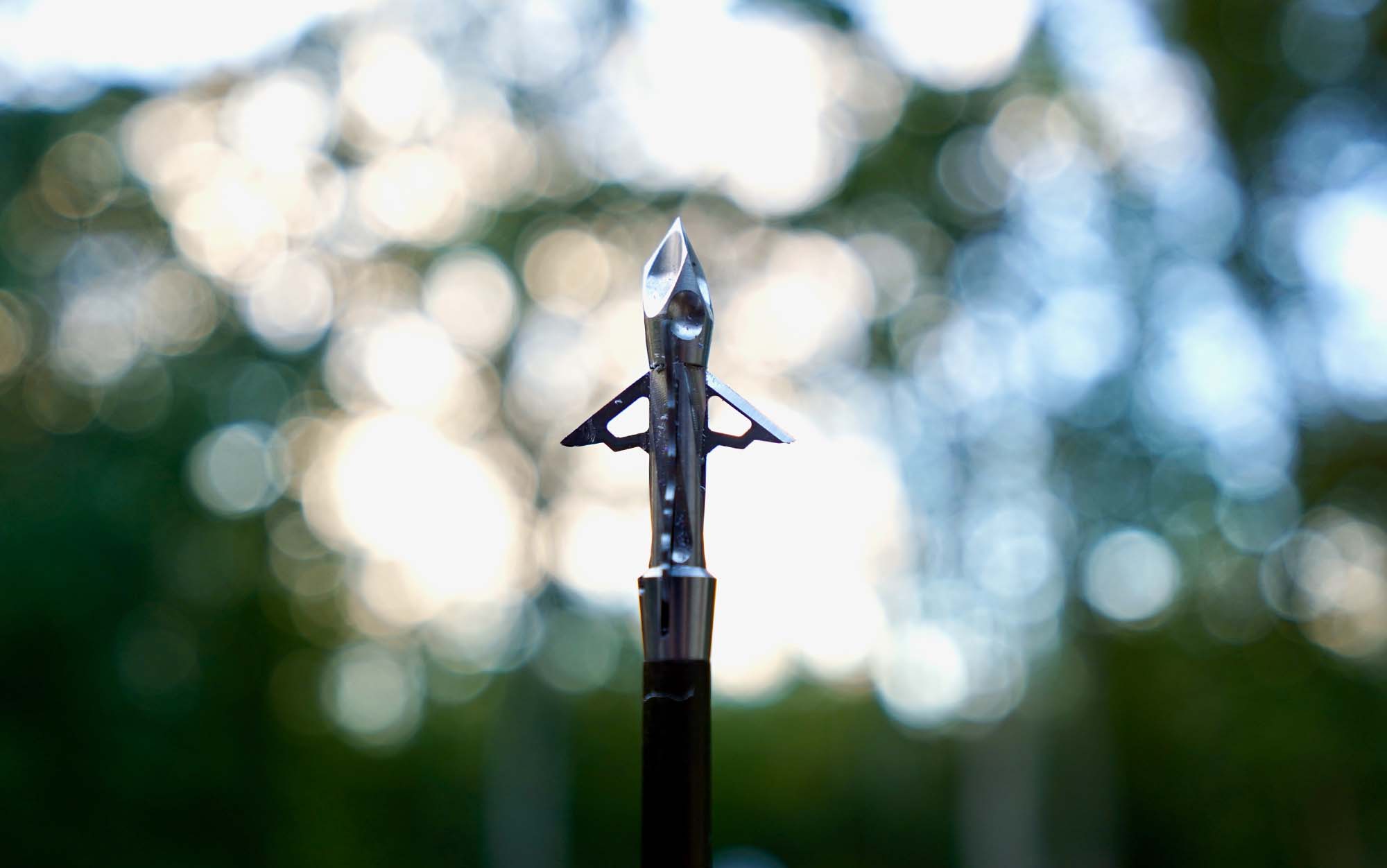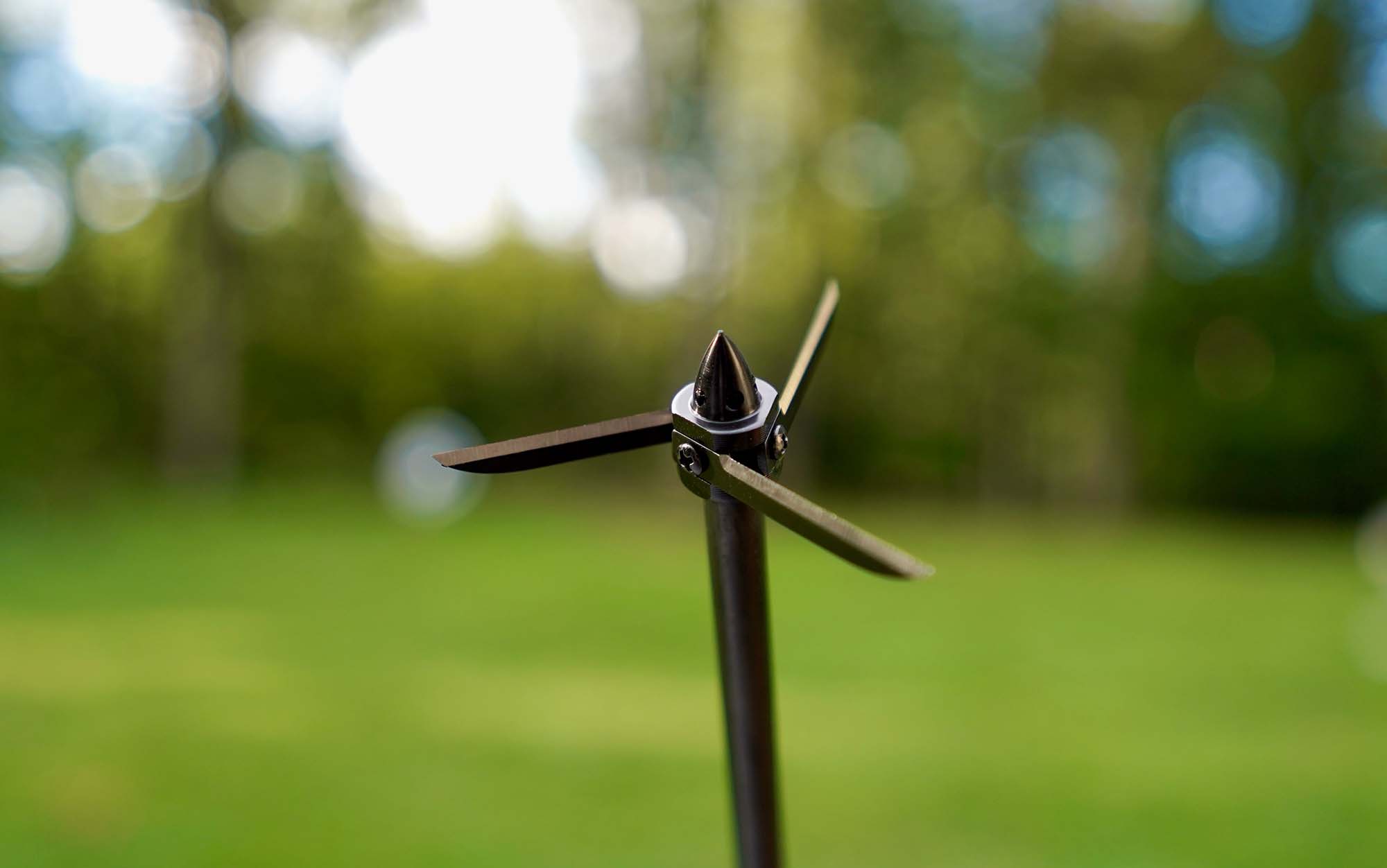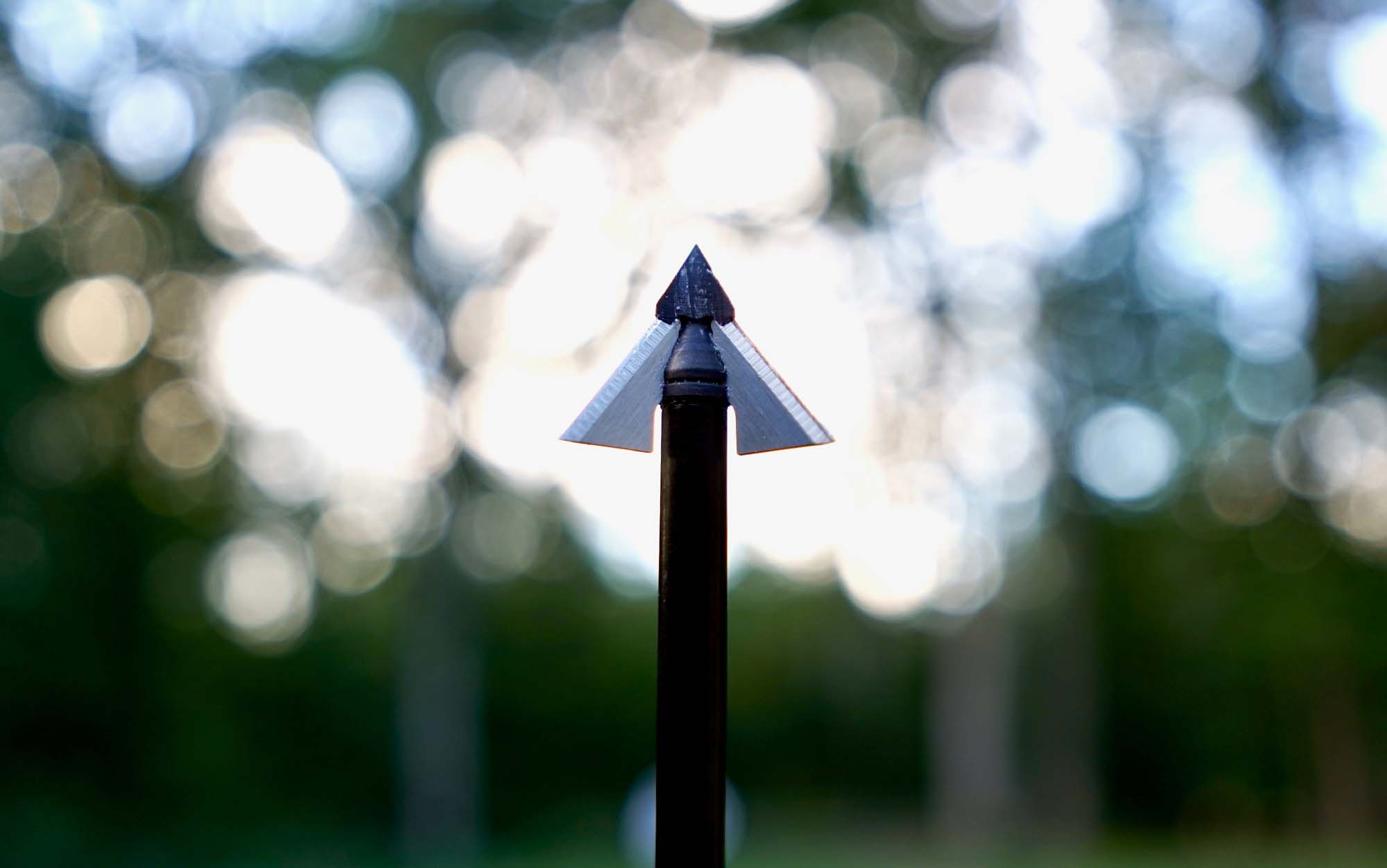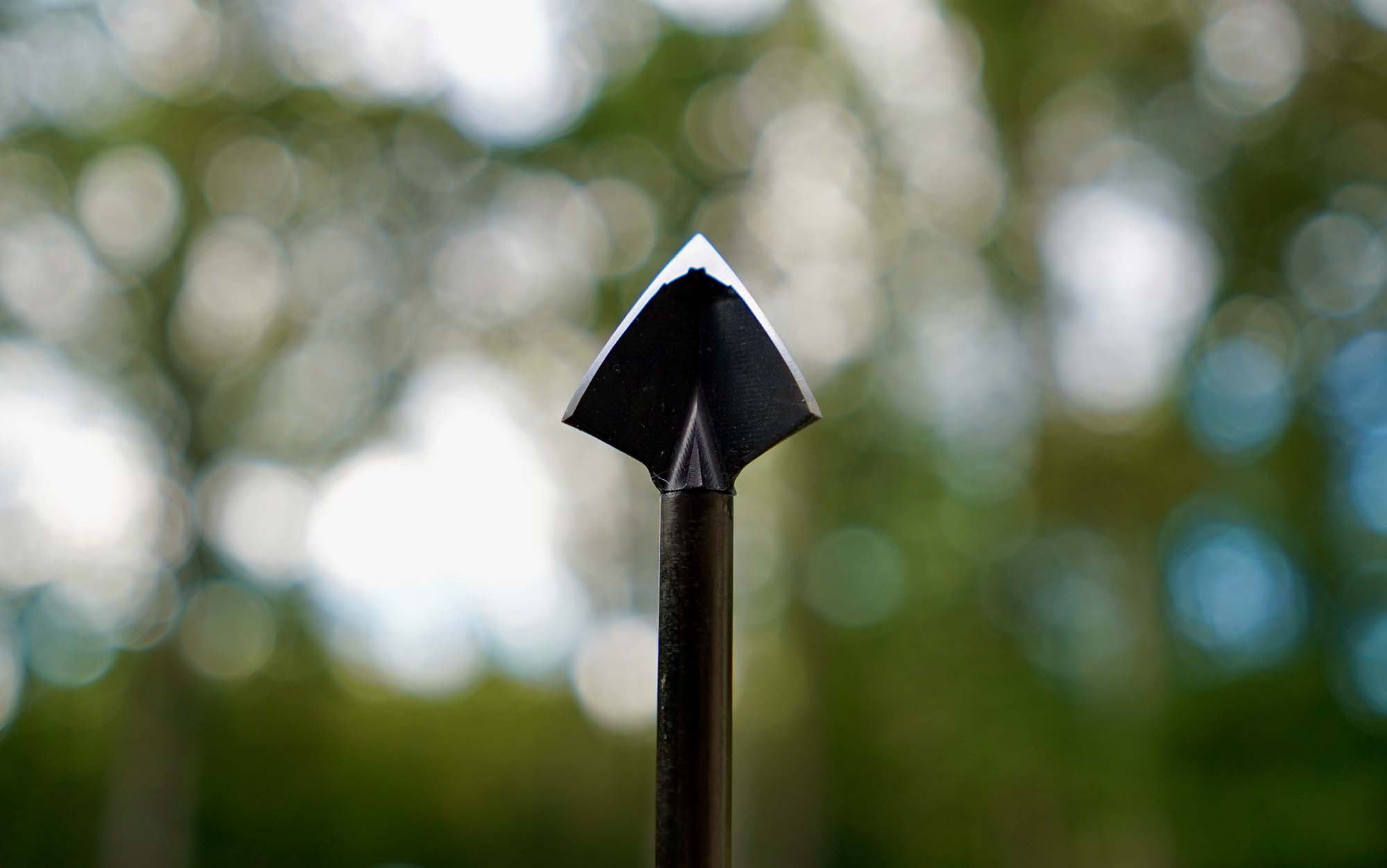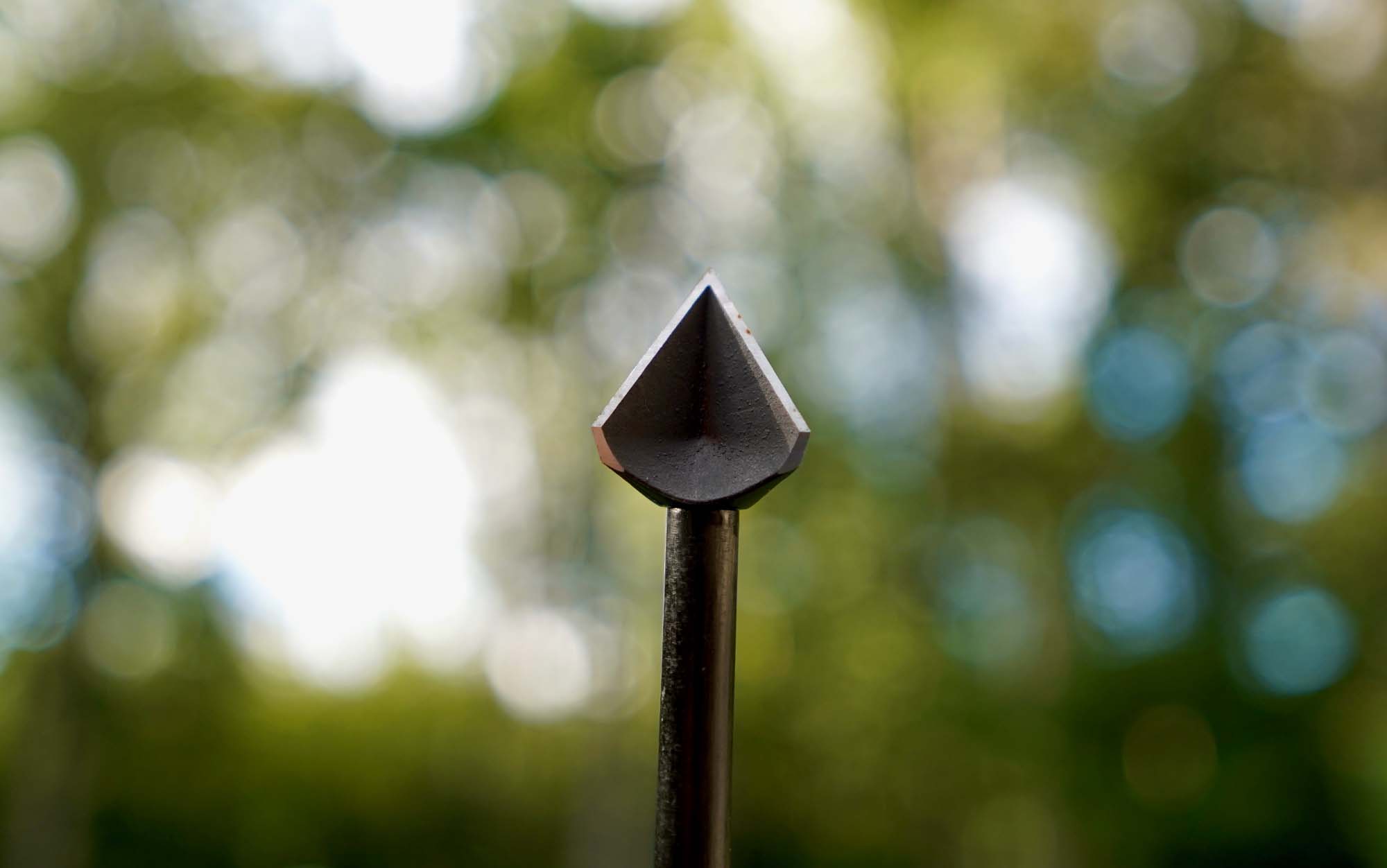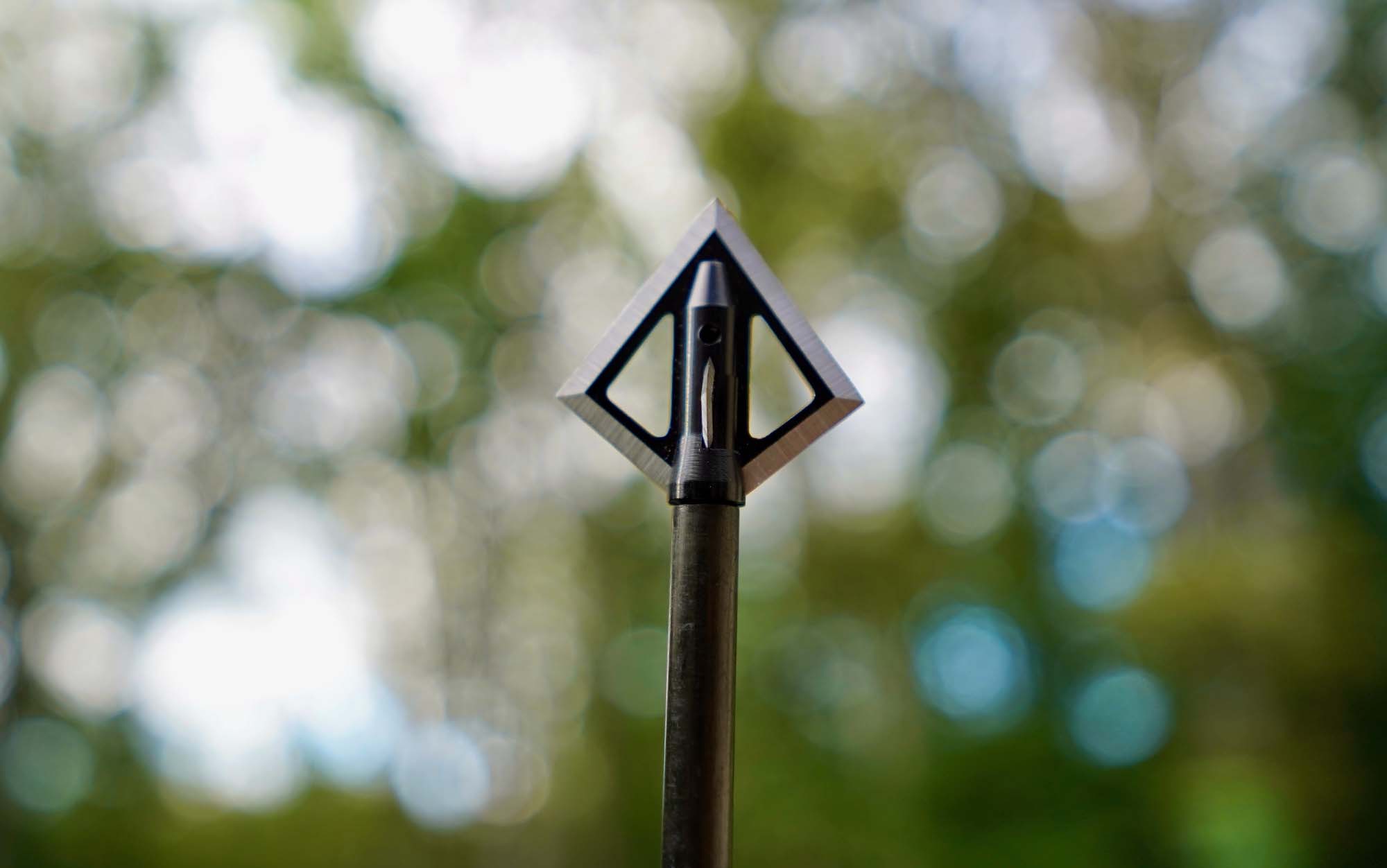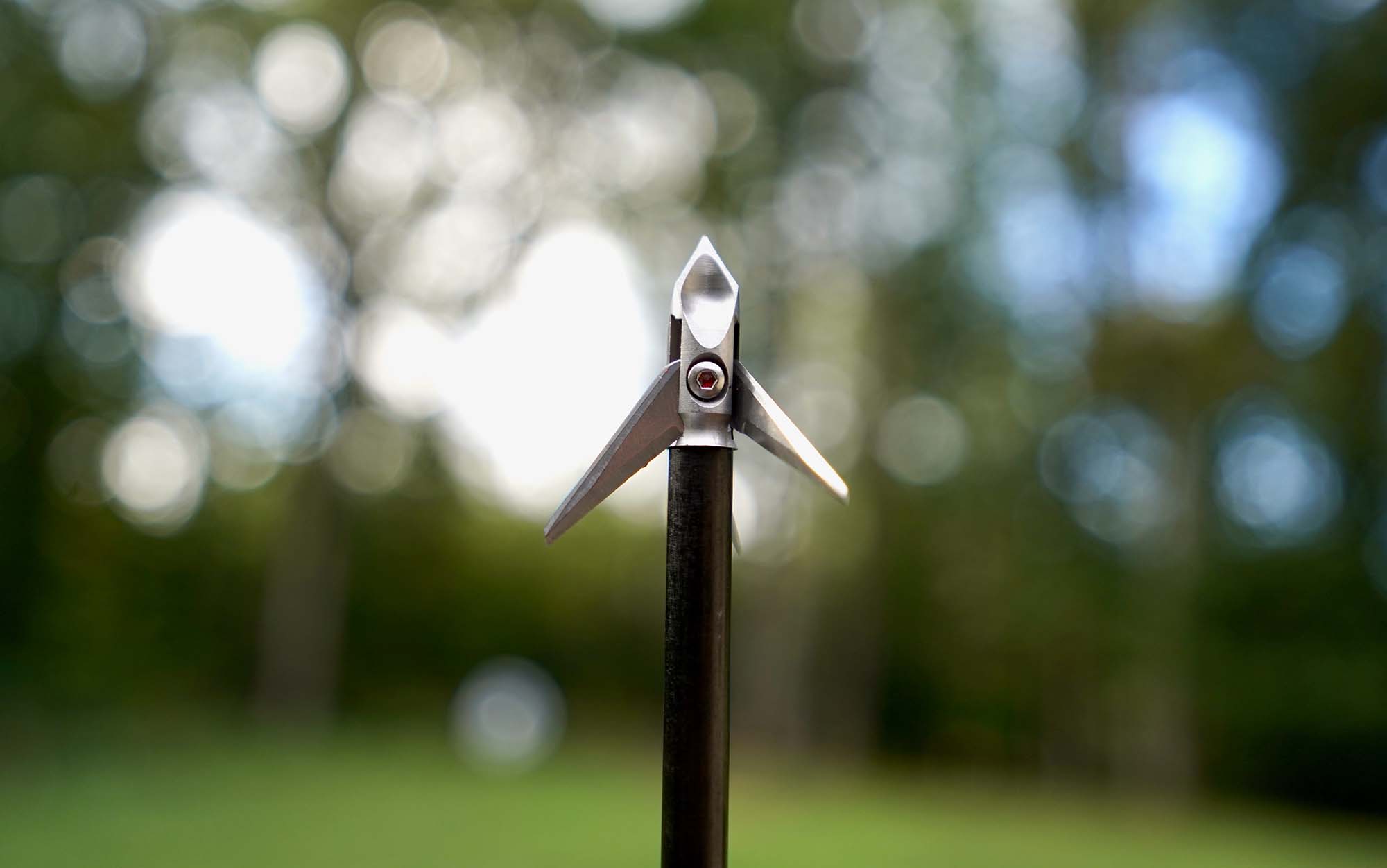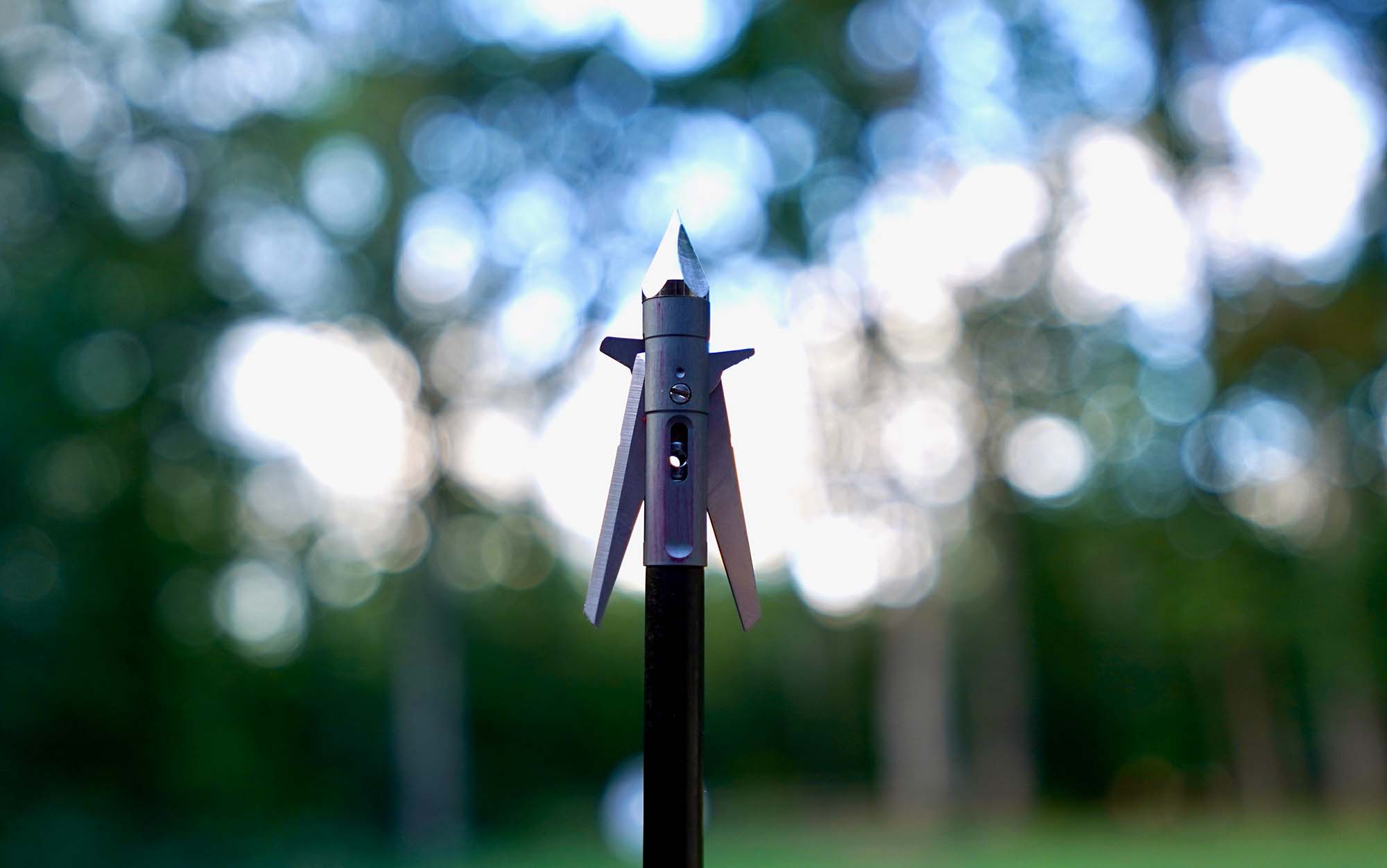We may earn revenue from the products available on this page and participate in affiliate programs. Learn More ›
Lethality with archery equipment depends on a good tune, accurate shot, and sharp broadhead. The broadheads are a key part of that equation because if they aren’t accurate, won’t keep an edge, or they break on impact, you won’t get the wound channel and penetration needed for a clean kill.
That’s why I tested 23 broadheads from top manufacturers with the help of Cody Greenwood of The Trad Lab. We tested the heads for accuracy, durability, sharpness, spin runout, edge retention, and wound channel. They were measured for push force, which measures how much force it takes to push each head through different types of media. In addition to those data points I also talked to bowhunting experts Aron Snyder and Tyler Freel, who have killed many big-game animals with a variety of broadheads, to get their feedback on what they’ve seen in the field.
The testing revealed several standouts from a field of good broadheads. Here are my reviews of the best broadheads from the test.
- Best Fixed Blade: Iron Will S100
- Best Mechanical: SEVR Titanium 1.5 and 2.0
- Best Budget: Magnus Stinger
- Sharpest: Day Six Evo 100
- Best Mechanical for Whitetails: G5 Deadmeat V2
- Best Single Bevel: Cutthroat S7
- Best Hybrid: Ramcat Diamondback Hybrid
- Best for Turkey Headshots: Magnus Bullhead
- QAD Exodus
- Cutthroat 3-Blade
- Annihilator 100
- Magnus Black Hornet
- Ramcat Hydroshock
- Muzzy Merc
- Slick Trick Torch
How We Tested Broadheads
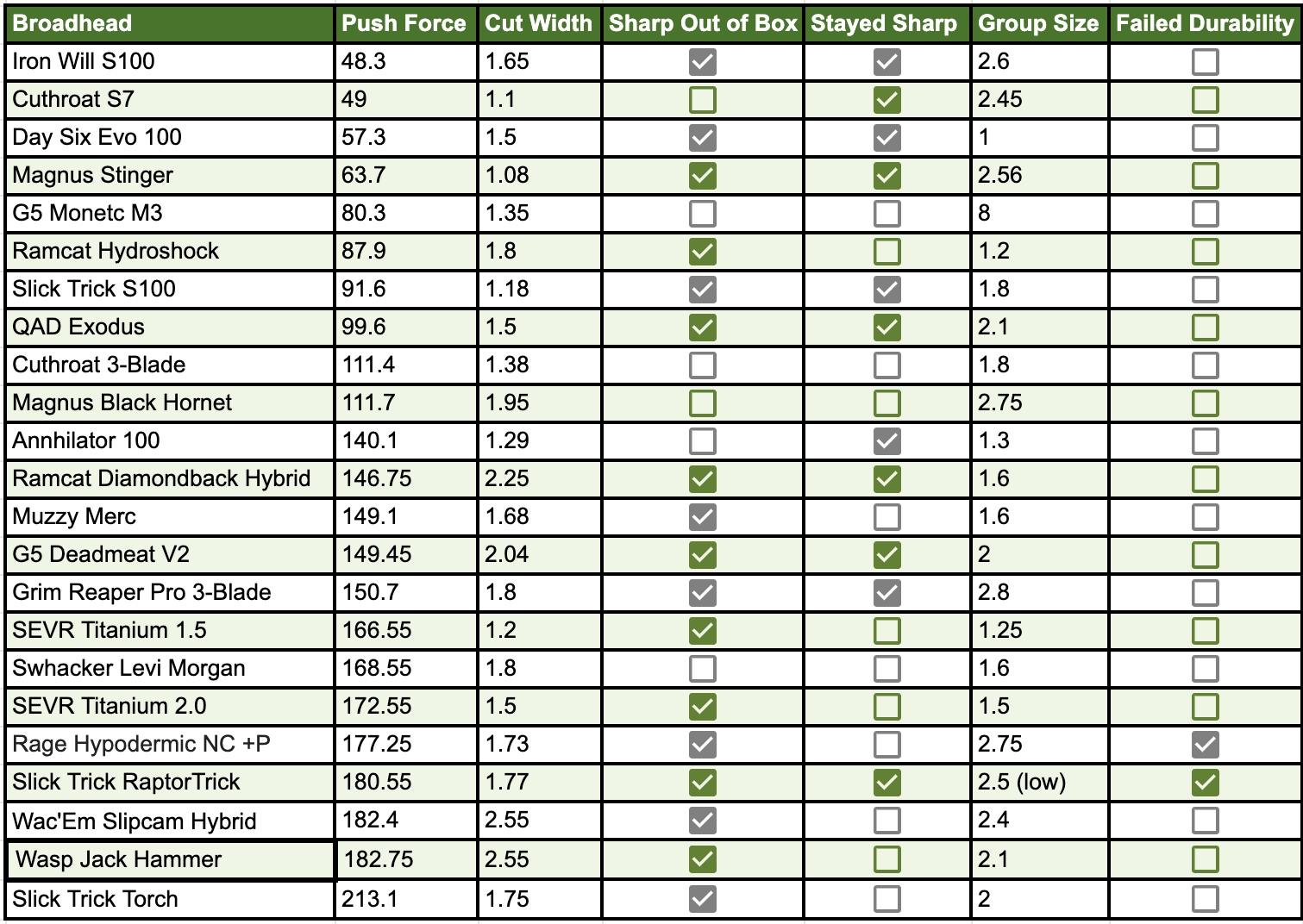
Push Force
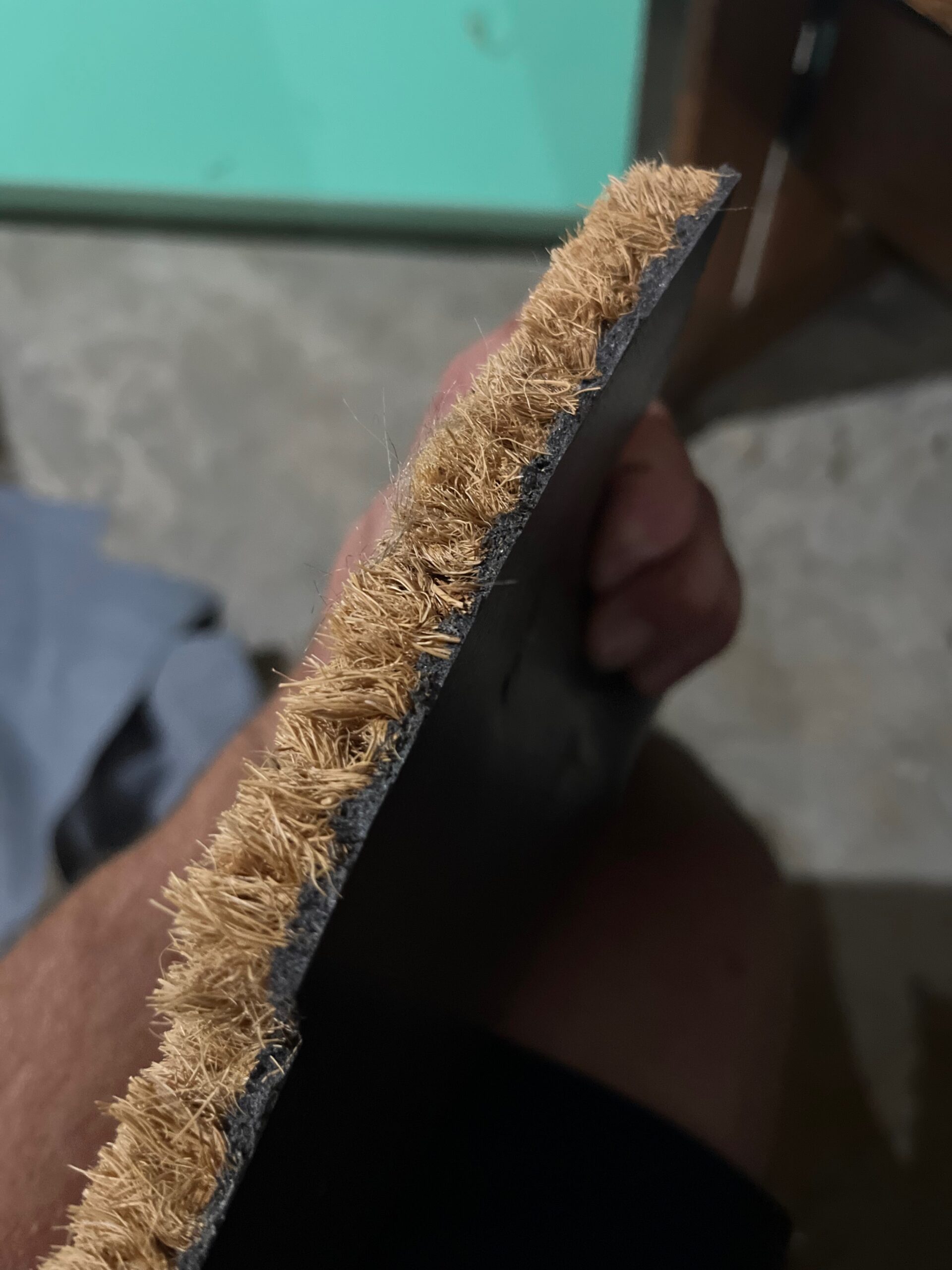
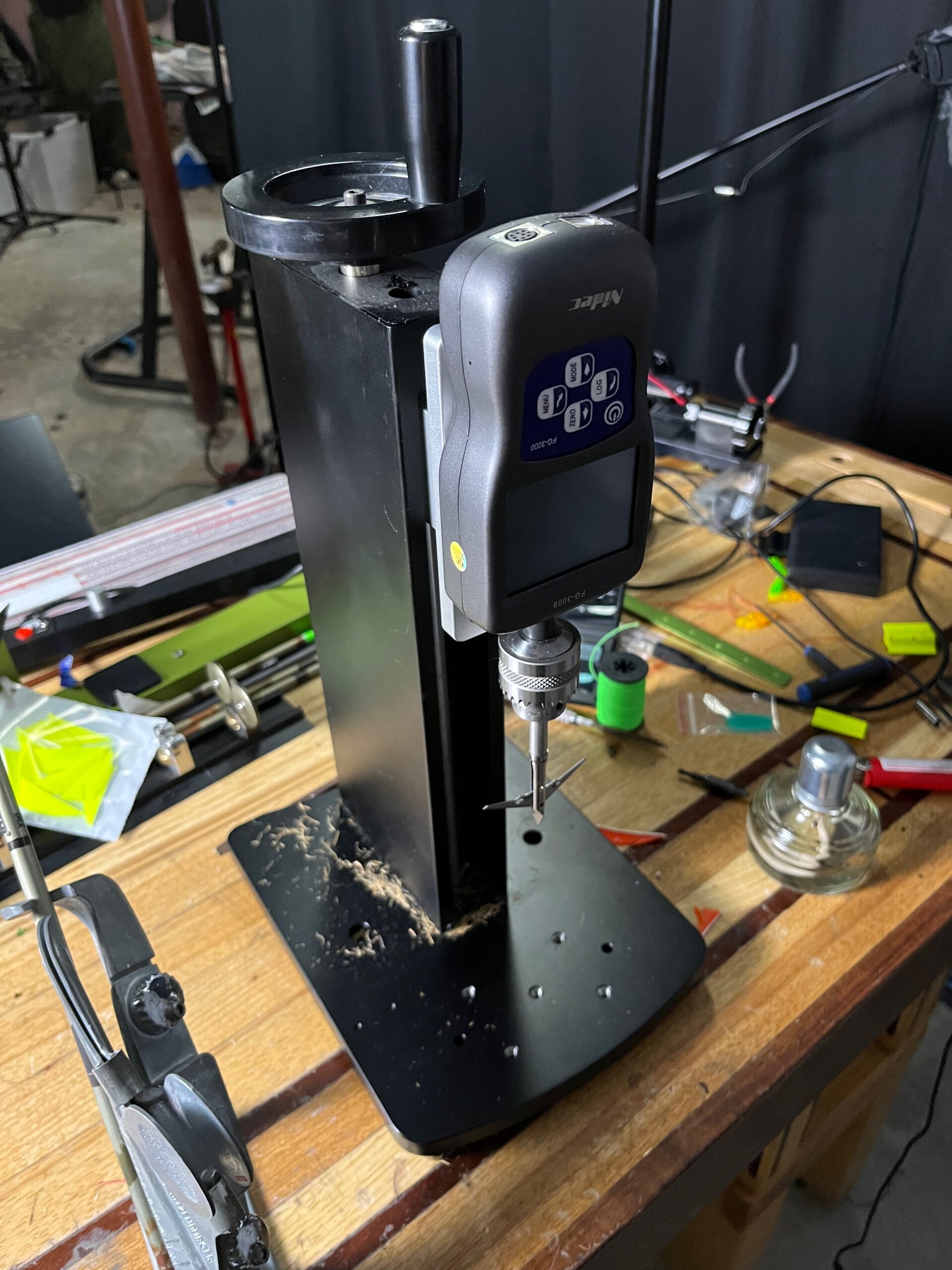
The push force instrument. Cody Greenwood
If you’re hunting large game like elk and moose, you’ll want a head that will easily passthrough those tough animals. Predicting how well a broadhead will penetrate an animal isn’t possible, since every shot on a wild animal is a dynamic situation. But what we can do is measure the amount of force it takes to push a broadhead through different media. With those measurements we can infer if a broadhead will penetrate a live animal well.
We measured the push force test with a NIST certified FG-3009 digital force gauge that operated on a test stand, which allowed for a controlled rate of force to be applied. The push force instrument measures in pounds, and two measurements were taken to rule out any variation in the testing.
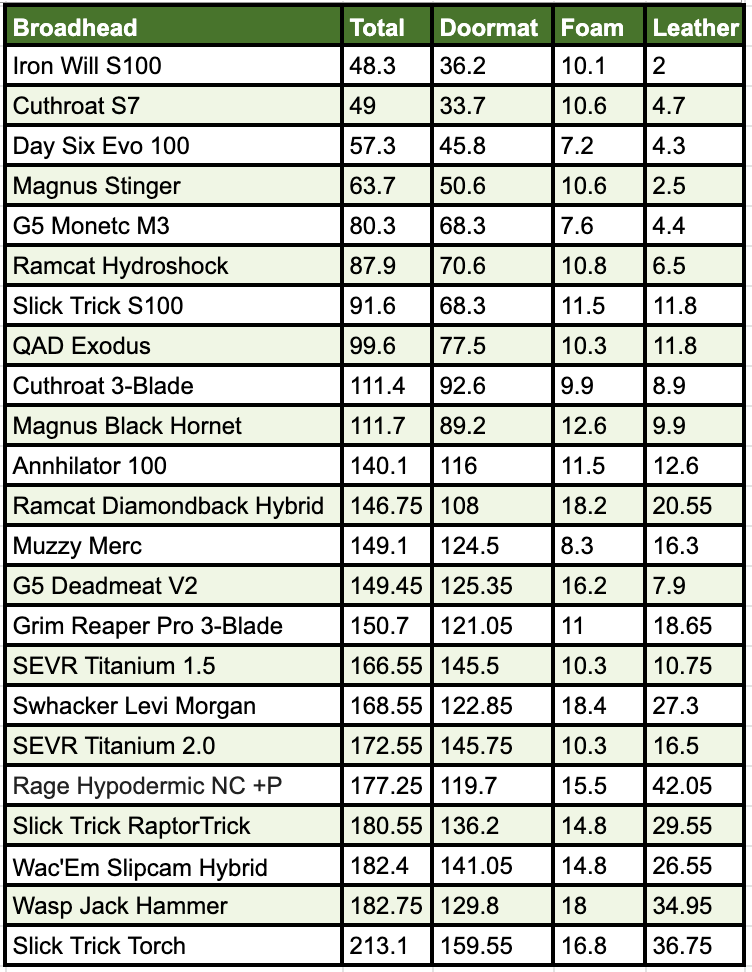
There are many options for media, but Greenwood chose: doormat, closed cell foam, and faux leather. These media were picked for their consistency and their ability to isolate certain portions of the broadheads. Greenwood used the doormat first to test each broadhead’s edge drag. He used closed cell foam to shows the effect of ferrule design. Faux leather was used as a hide simulator and is a great indicator of tip design. It is important to note that these media types take more force than is required to penetrate an actual whitetail. It’s also important to note that each piece of media used in testing was uniform in size because different size pieces create different results.
Sharpness and Edge Retention
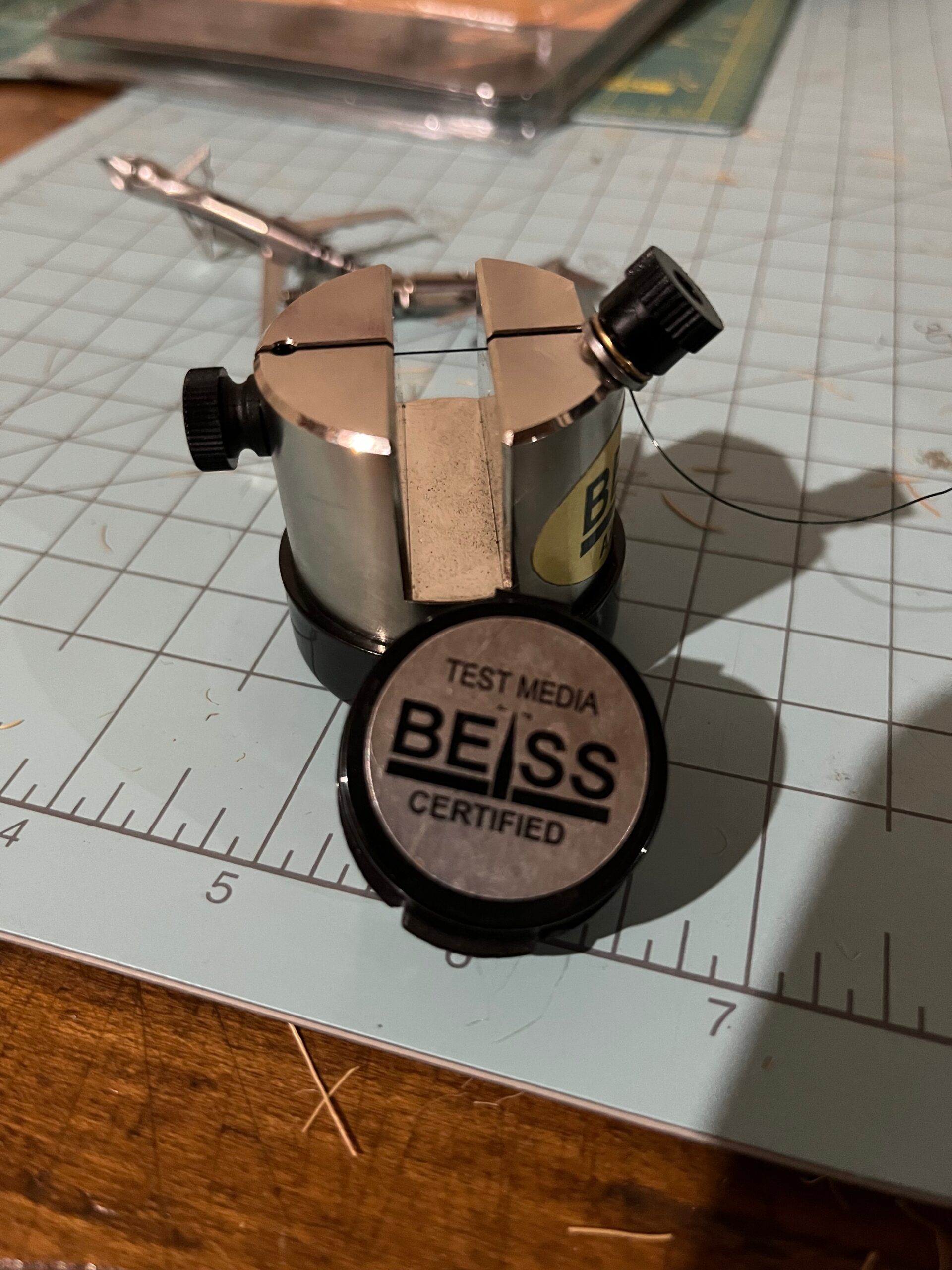
Greendwood tested sharpness by seeing how much force was needed to cut Double X+ media (measured in grams). He used an Edge-on-Up Industrial Edge Tester to do this and kept cutting angles consistent. He also took two measurements for each head to rule out variance.
Out of the box sharpness ranged from 147 grams to 924 grams. Any broadhead that required less than 400 grams to cut the medium was deemed sharp. Broadheads that required more than 400 grams were not sharp.
For edge retention, we put the heads through the sharpness test after going through the push force test. Heads that were still below the 400 gram threshold or within 50 grams of their original measurement are considered to have good edge retention.
Accuracy
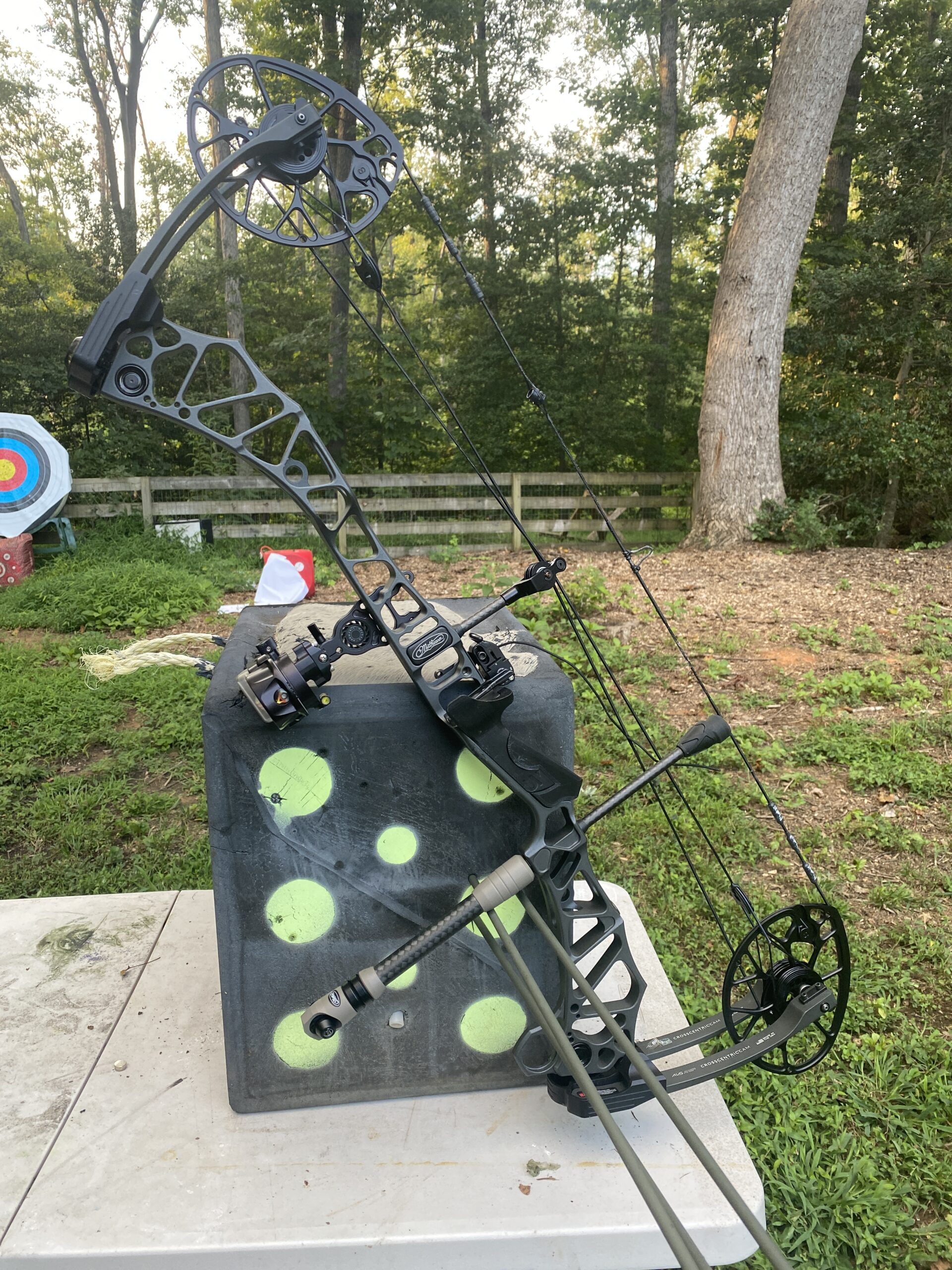
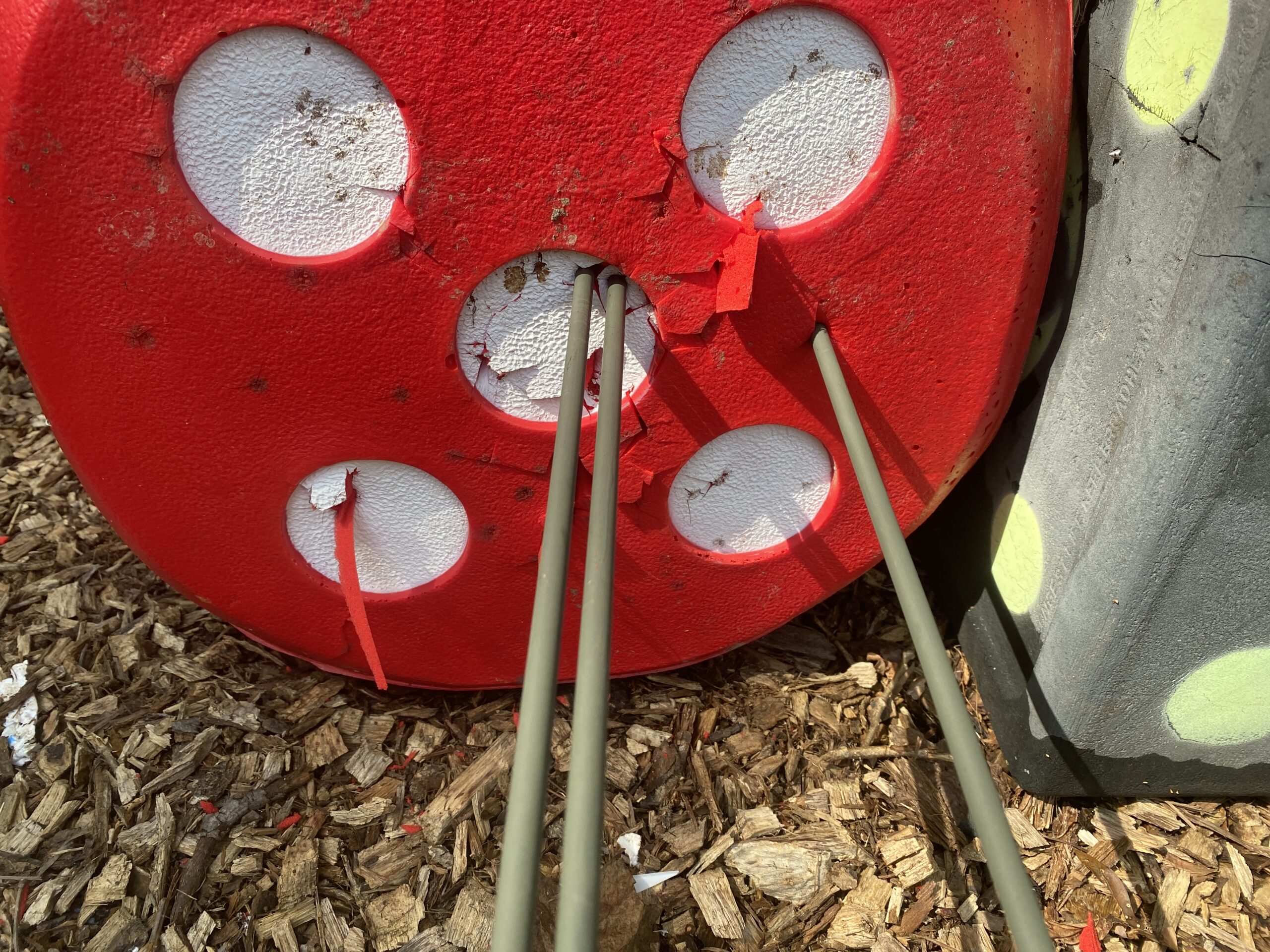
I shot three broadheads from the same package at 40 yards, along with a field point. I chose the 40-yard distance because it’s far enough to see a variance and close enough to reduce human input. The broadhead group was measured using calipers. The group variance from the field point arrow to the center of the broadhead group was also measured. This process was done twice for each broadhead model.
During normal practice, my groups at 40 yards range from under 1 inch to 3 inches. I considered any broadhead that shot under a 3-inch group to be accurate. All except one broadhead shot under a 3-inch group, and nearly all grouped with field points.
The G5 Montec M3 did not shoot a 3-inch group due to a flier. Two of the three heads were consistently under a 2-inch group, but one head was also consistently 8 inches outside the group.
The Magnus Bullhead did not hit with the field point arrow, and was consistently 6-inches low. It did shoot 3-inch groups, though. Another head that did not group with field points was the Slick Trick RaptorTrick, which shot good groups just below the field point by 3 inches.
Bow and Arrows
We used a 60-pound Mathews Traverse shooting 250 spine Black Eagle Rampage arrows fletched with three TAC Driver 2.75 in a helical configuration. The setup was bareshaft tuned prior to the accuracy test. The setup’s speed is about 260 fps.
Wound Channel
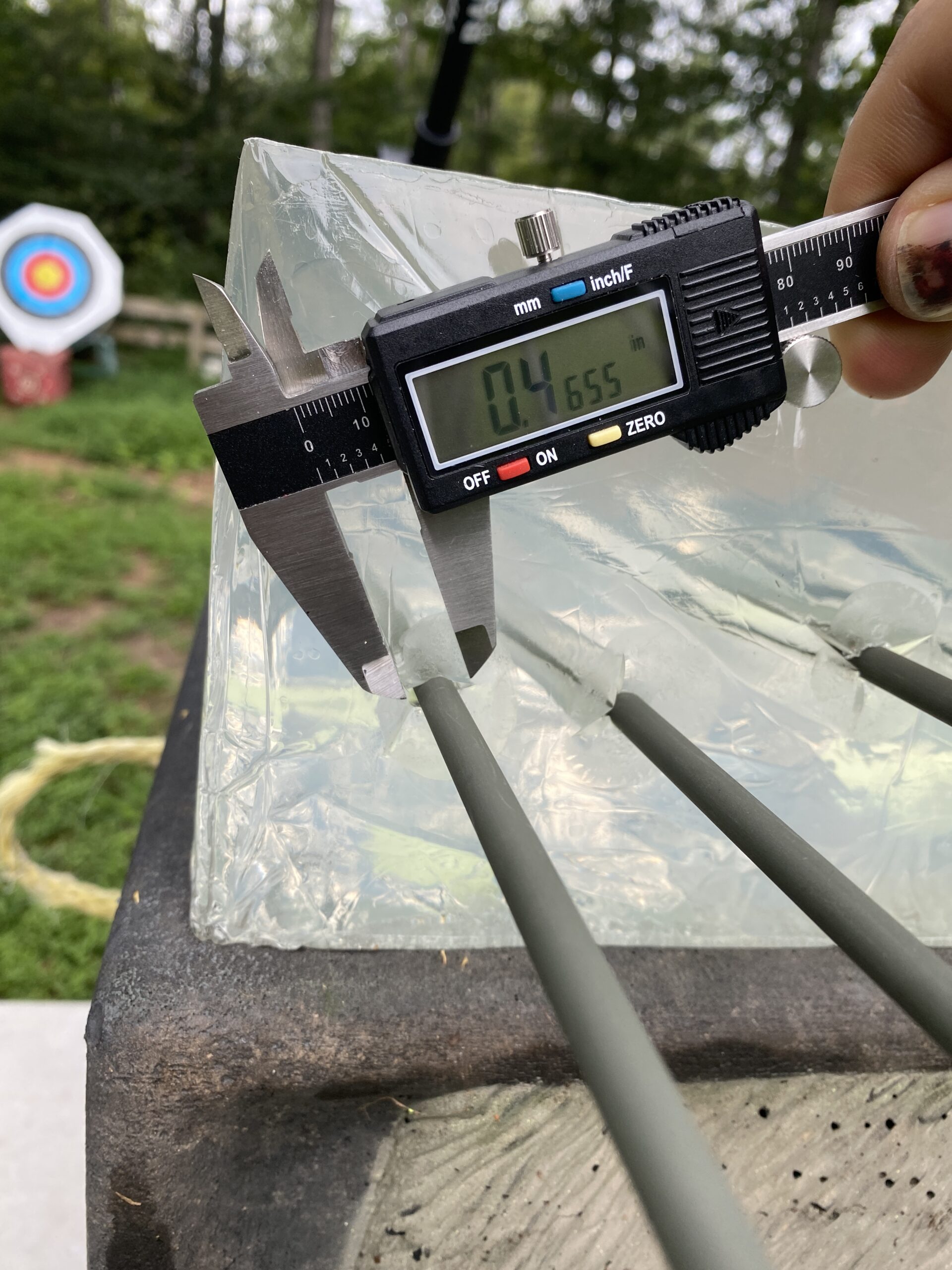
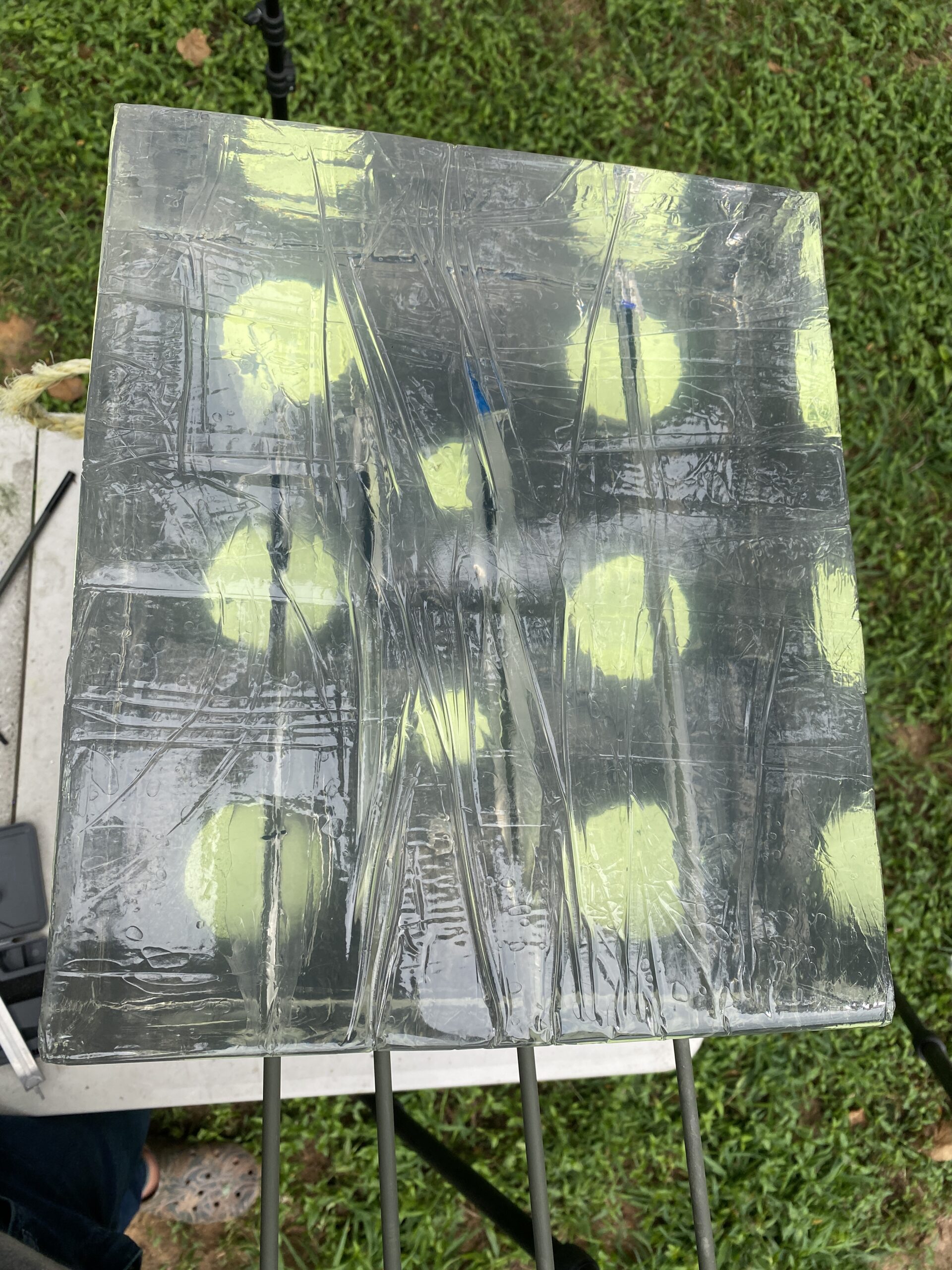
I shot one broadhead of each model into a 10 percent clear ballistics gel block. The wound channel width was measured with calipers. For three and four-blade broadheads the sum of each blade’s cutting width was used.
Durability
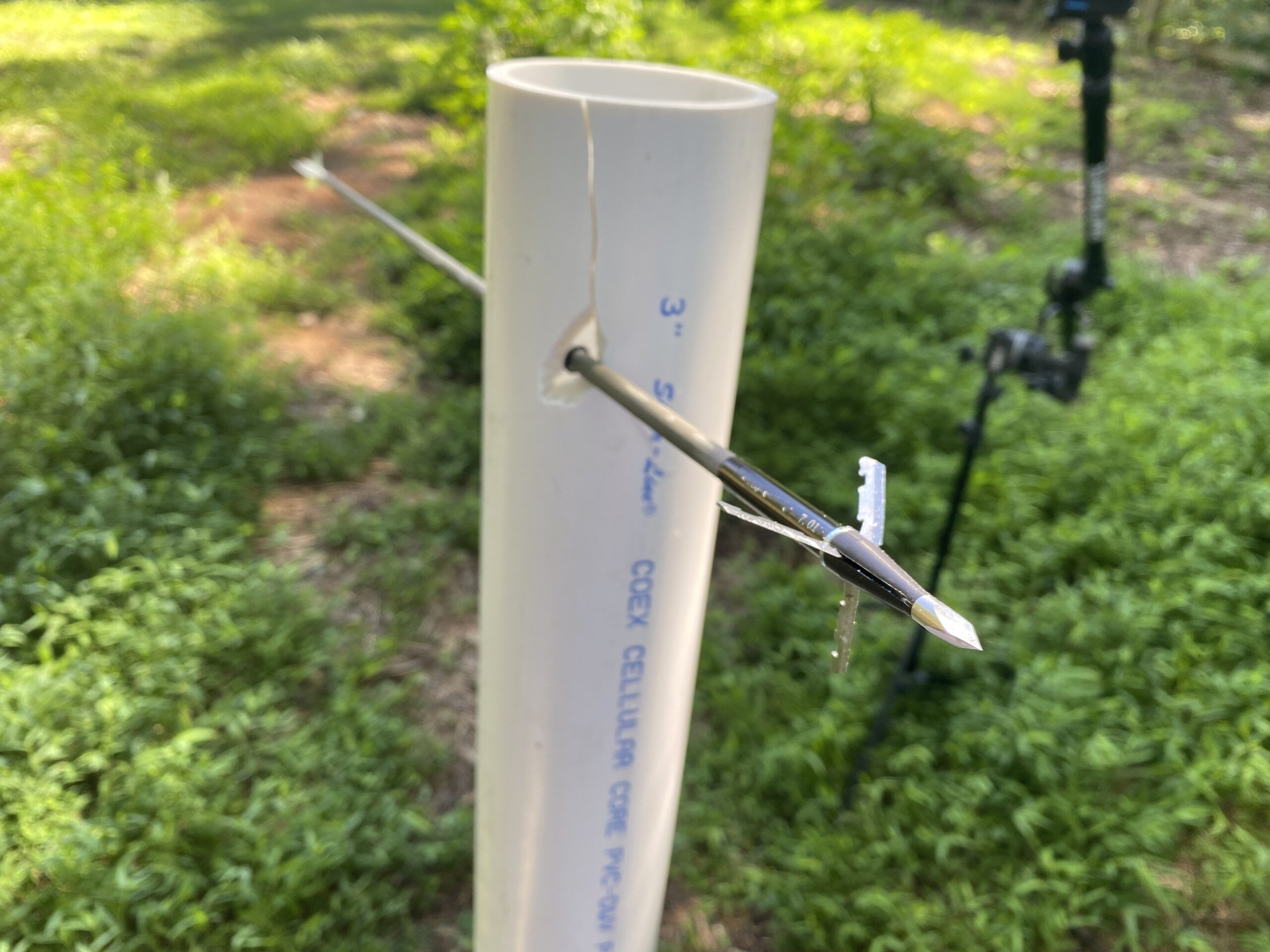
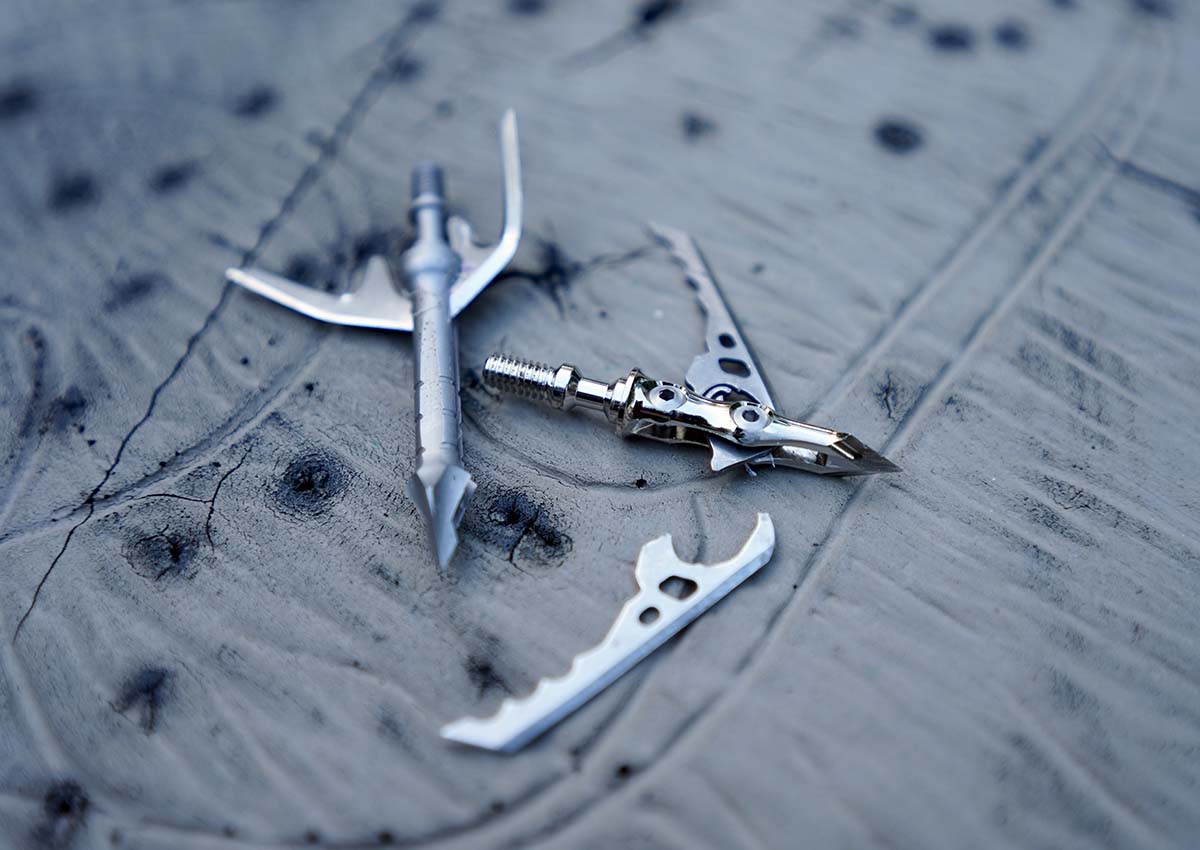
I shot one broadhead of each model into a 3-inch PVC pipe. The pipe’s shape and hardness are meant to simulate a bone impact, but is more consistent than using animal bone. This test was rated as a pass or fail. If the broadhead impacted the pipe and the blades remained intact, it passed the test.
The SlickTrick Raptor Trick failed this test with bent blades. The Rage Hypodermic NC +P also failed the durability test with a broken blade.
Deflection
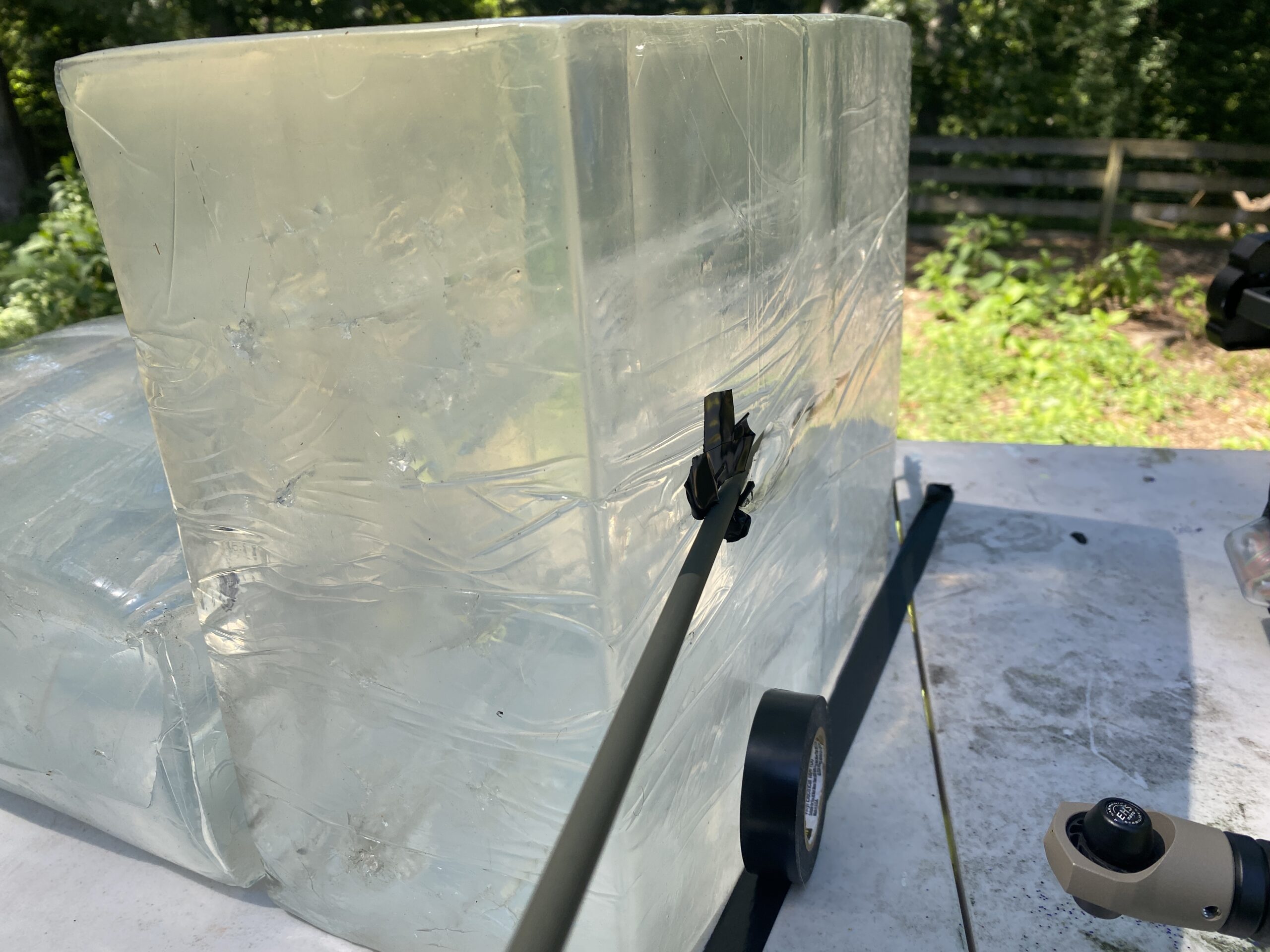
I placed the ballistic gel block at a 75-degree angle to simulate an extreme quartering shot. An aiming point was placed on the block and two high-speed cameras recorded each impact. This test was to see if a head impacted the aiming point but did not enter the gel at that point. Most of the broadheads entered the gel at the aiming point. But the Swhacker Levi Morgan Series hit the gel at the aiming point and entered the gel 8 inches forward. That was considered a failure.
Best Fixed Blade: Iron Will S100
Test Results
- Sharp Out of the Box: Yes
- Passed Edge Retention: Yes
- Passed Durability Test: Yes
- Push Force: 48.3 pounds
- Measured Wound Channel: 1.65 inches
- 40-Yard Group Average: 2.6 inches
Pros
- Excellent edge retention
- Durable
Cons
- Users report light blood trails
The Iron Will S100 is a four-blade broadhead made from .062 inch A2 tool steel and is available in weights from 100 to 250 grains. The S100 measured 289 grams in the sharpness test, which is to say it’s plenty sharp. This broadhead will also stay sharp in your quiver, and even after passing through an animal it usually just requires some stropping to get it ready to hunt again. In the sharpness retention test, the Iron Will was within 20 grams of its original measurement which was the best for that test. To keep them sharp in the field, be sure to apply a rust preventative like Axe Wax because A2 is a carbon steel.
The S100s performed well in all of our tests, and it’s a top broadhead to consider if you’re in the market for a premium head. I hunted with the Iron Will S series for whitetails in 2020. From my recurve bows in the low 40-pound range, I had 100 percent pass-throughs on three deer, and each head still looked like new afterward. That season I also shot one deer with an Iron Will Wide, with the same result. The difference between the standard and the wide was the blood trails. The deer shot with the standard consistently had light blood trails—albeit short ones—despite good hits. The Wide had a significantly better blood trail. Snyder has used Iron Will broadheads extensively and has had similar experiences. He said the Wides produced some of the most devastating wound channels he has seen.
The Iron Will won the push force test—it was the easiest to push through all the media. At a cumulative score of 48.3 pounds, it required a third of the force of the worst performing fixed blade. If you’re shooting a low draw weight, a recurve bow, targeting big game at distance, or want a head that stays sharp, then the Iron Will S100s should be at the top of your list.
Best Mechanical: SEVR Titanium 1.5 and 2.0
Test Results
- Sharp Out of the Box: Yes
- Passed Edge Retention: No
- Passed Durability Test: Yes
- Push Force: 166.55 pounds (1.5) and 172.55 pounds(2.0)
- Measured Wound Channel: 1.2 inches (1.5) and 1.5 inches (2.0)
- 40-Yard Group Average: 1.25 inches (1.5) and 1.5 inches (2.0)
Pros
- Accurate
- Large entry holes
Cons
- Rattle in quiver
- Blades can deploy if pushed too hard into a quiver
The SEVR 1.5 and 2.0 are available in 100 and 125-grain weights. The ferrule is made from grade-5 titanium, and the blades are made from unspecified stainless steel. The blades are rear deploying, which means it’ll cut an entrance hole. Once deployed, the blades lock together and will pivot around bone rather than cut through it, which SEVR claims helps penetration.
Another interesting feature is how easy it is to practice with SEVRs. You just have to drop in the included set screw to lock the blades together. Then clean out the target residue, replace the o-ring, and remove the set screw when you’re ready to take them hunting. Another area where the SEVR stands out is its low-profile design, which results in accuracy at extended ranges. They were the most accurate mechanical in the test at 1.25 and 1.5-inch groups. Snyder has tested the SEVRs beyond 40 yards. “I can grab any SEVR and group at 100,” he said.
In the durability test, the blades had slight wrinkling but did not bend or break. I would treat the blades as single use, but the ferrule can be reused for multiple animals. Snyder has used the SEVRs on a lot of animals with great success. “I prefer the 2.0 for most things,” he said. “They’ve had a devastating effect on animals.” While Snyder prefers the 2.0, he recommends the 1.5 for elk.
The blades rattle, and you can hear them in your quiver, but Snyder has a solution for that issue. “I put wax between the blades to reduce the rattling,” he said
The SEVR 2.0s were sharp out of the package, but the 1.5s at 494 grams were not. I would recommend checking sharpness on SEVRs and touching them up if necessary. In the push force test the SEVRs did average among the mechanicals, and one design feature holding them back is the arms that deploy the blades because in the open position they are exposed and cause drag. That drag could be minimized if those arms were sharpened rather than rounded. In his testing notes Greenwood said that if a broadhead isn’t cutting, it’s pushing and that causes significant drag.
Best Budget: Magnus Stinger
Test Results
- Sharp Out of the Box: Yes
- Passed Edge Retention: Yes
- Passed Durability Test: Yes
- Push Force: 63.7 pounds
- Measured Wound Channel: 1.08 inches
- 40-Yard Group Average: 2.56 inches
Pros
- Lifetime warranty
- Accurate
- Good push force performance
Cons
- Bleeder blades on the test model did not cut the gel
The Magnus Stinger is a stainless steel broadhead that comes in weights from 85 to 150 grains and as a two or four blade. They’re an affordable head at around $40 for three. In the accuracy test they shot under a 3-inch group and went through the PVC pipe unscathed.
In the sharpness test, the Stingers were right on the bubble for being considered ready to hunt. Two of the three heads met the 400-gram requirement, but one head was 50 grams over. In the gel test, the bleeder blades did not cut the gel, which reduced the wound channel. So I’d recommend touching up Stingers if you plan on taking them straight from the pack to the field.
In the push force test, the Stingers were a standout performer coming in fourth right behind heads costing more than double its price. If you need a broadhead that will penetrate well and you don’t want to spend $100 for three, then consider the Stingers.
Snyder has had great experiences with Stinger and his wife has used them successfully as well. “If I was on a budget, the Stinger would be at the top of my list,” he said.
Sharpest: Day Six Evo 100
Test Results
- Sharp Out of the Box: Yes
- Passed Edge Retention: Yes
- Passed Durability Test: Yes
- Push Force: 57.3 pounds
- Measured Wound Channel: 1.5 inch
- 40-Yard Group Average: 1 inch
Pros
- Very sharp
- Smallest groups of the test
Cons
- Some users report that the steel is brittle
Day Six Evo 100‘s four blades are made from S30V steel and come in weights from 100 to 175 grains. S30V is known as a quality stainless steel used in knife making, and it carries the same edge retaining properties in the Evo 100.
S30V is known for its edge retention and corrosion resistance, but it’s also known to be brittle steel that’s prone to chip in hard use. That’s because the heat treatment required for S30V makes it hard steel. “The only downside of the Day Six is the steel can be brittle, but they’re a very good head,” Snyder said. With that said, in my durability test the Evo 100 sustained no damage, and the head looked like new. It also had the smallest groups of all the broadheads shot.
The Evo 100 was also the sharpest broadhead out of the package. It was around 150 grams, which puts it in the range of a razor blade. The reason that’s so impressive is that the Evo 100 has a much thicker blade than a razor. A key advantage of starting out so sharp is that in the edge retention test the head measured 222 grams, which is still well below our 400 gram sharpness mark. The head also did well in the push force test finishing third. Although one design feature that might have held it back from being the best is its forward bleeder blades (the Iron Will with its bleeders in the rear performed better).
Best Mechanical for Whitetails: G5 Deadmeat V2
Test Results
- Sharp Out of the Box: Yes
- Passed Edge Retention: Yes
- Passed Durability Test: Yes
- Push Force: 149.45 pounds
- Measured Wound Channel: 2.04 inches
- 40-Yard Group Average: 2 inches
Pros
- One of the largest wound channels
- One of the sharpest out of the package
- Comes with practice head
Cons
- Some users report premature blade deployment
The Deadmeat V2 is a rear-deploying mechanical, available in 100 or 125 grains. The blades are retained by a collar rather than a band. Snyder cautions that the blades can deploy when caught on brush during a stalk, which is less of an issue for treestand hunters.
In the gel test, there were only a few broadheads that recorded a wound channel over two inches, and the Deadmeat V2 was one of them. “The Deadmeat is one of the most accurate and devastating mechanicals I’ve used,” Snyder said. Our testing confirmed his in-the-field experience. Aside from the large wound channel, the Deadmeat V2 was accurate, durable, and at 220 grams it was the third sharpest. It also did the second best of all the mechanicals in the push force test, despite its large cutting diameter. The blade sharpness and tip design were contributors to its ease of penetration.
Best Single Bevel: Cutthroat S7
Test Results
- Sharp Out of the Box: No
- Passed Edge Retention: Yes
- Passed Durability Test: Yes
- Push Force: 49 pounds
- Measured Wound Channel: 1.1 inches
- 40-Yard Group Average: 2.45 inches
Pros
- Durable
- Professional sharpening available
Cons
- Some users report light blood trails
Single bevel broadheads might be the latest craze, but RMS Gear has been making their Cutthroat heads for years. One recent update is that they’re now made from S7 Tool Steel. S7 is known as a durable, impact-resistant steel with a relatively low hardness, which makes it ideal for a tough and easy-to-sharpen broadhead. “They’re probably the most durable broadheads I’ve used, and I don’t know if I’ve ever ruined one,” Freel said. The cutthroats don’t come sharp out of the package, but RMS Gear will sharpen them for an additional charge.
In addition to being durable, Freel has had excellent passthroughs with them out of his recurve. “I almost always get pass-throughs with the Cutthroat,” he said. “I shot through a bear’s scapula, and it was like it wasn’t even there.” What Freel saw in the field was also seen on the Cutthroat’s very low push force numbers.
Best Hybrid: Ramcat Diamondback Hybrid
Test Results
- Sharp Out of the Box: Yes
- Passed Edge Retention: Yes
- Passed Durability Test: Yes
- Push Force: 146.75 pounds
- Measured Wound Channel: 2.25 inches
- 40-Yard Group Average: 1.6 inches
Pros
- Wide wound channel
- Durable
- Accurate
Cons
- Tip comes loose
- No practice mode
If there was one theme in the broadhead test it’s that short heads were more accurate. One of the main reasons for that is it’s harder to manufacture a long head with good tolerances. The Ramcat Diamondback Hybrid was an exception to that trend. It shot impressive groups and had very low spin run out. I also expect longer heads to be less durable, but this head looked like new after passing through the PVC pipe.
Hybrid broadheads have the reliability of fixed blade heads with the wide cut of mechanicals. The Diamondback Hybrid had the second largest wound channel because of its four-blade design. This head has Ramcat’s concave-scoop head and a single bevel fixed blade. I don’t know why Ramcat decided to go with a single bevel on a hybrid broadhead because it won’t spin while it cuts like a Cutthroat. But, the single bevel doesn’t seem to hurt the head’s performance. It also has two wide cutting mechanical blades that are secured with an o-ring. You can place that o-ring closer to the shaft or closer to the tip, depending on if you want the blades to be more secure or easier to open.
The Diamondback Hybrid also did the best of all the mechanicals in the push force test, which is surprising considering its large wound channel. At 339 grams the blades were also very sharp.
Best for Turkey Headshots: Magnus Bullhead
Test Results
- Passed Durability Test: Yes
- 40-Yard Group Average: 3 inches
Pros
- Accurate
- Designed for turkey headshots
Cons
- Hit low of field points
The test parameters were very consistent across all the heads, except this one. The Bullhead’s design made push force and gel tests impractical and irrelevant. This broadhead is designed to be shot at a turkey’s neck, so its most important test is accuracy.
I was really surprised by how well the Bullheads grouped. I did have to shoot one, mark its location and then continue with testing to avoid the blades hitting each other, or my arrows. At 40 yards I had no issues holding a 3 inch group, but the group was about six inches low of my field point group. That’s because the huge blades create more drag. This is easily solved by adjusting your bow sight. I also shot this head into the PVC pipe and it passed the durability test.
QAD Exodus
Test Results
- Sharp Out of the Box: Yes
- Passed Edge Retention: Yes
- Passed Durability Test: Yes
- Push Force: 99.6 pounds
- Measured Wound Channel: 1.5 inches
- 40-Yard Group Average: 2.1 inches
Pros
- Second best spin runout
- Durable
- Sharp
Cons
- Did not do great in the push force test
The QAD Exodus‘ blades sit over the shaft making it one of the shortest heads on the market. The short ferrule makes the Exodus inherently durable, accurate, and easy to spin true. It had the second best spin runout tolerances. The strong diamond tip and thick blades powered through the durability test. Despite its dull tip, it did better than the other three-blade broadheads in the push force test.
The blades on the Exodus are easy to replace and stayed sharp through testing. The longevity of this broadhead on the market is also a testament to its reliability. If you’re in the market for a replaceable, three-blade head, the QAD Exodus is one of the best options.
Cutthroat 3-Blade
Test Results
- Sharp Out of the Box: No
- Passed Edge Retention: Yes
- Passed Durability Test: Yes
- Push Force: 111.4 pounds
- Measured Wound Channel: 1.38 inches
- 40-Yard Group Average: 1.8 inches
Pros
- Durable
- Accurate
Cons
- Can rust if not treated
The Cutthroat 3-Blade is available in 100, 125, 150, 200, and 250 grains. They’re CNC machined from high-carbon steel. One of the signature features of this head is the curved blades. “I found that the convex blade makes a larger wound channel,” Snyder said. “I shot an aoudad with them that had a blood trail about three feet wide for 40 yards.”
When you buy Cutthroat broadheads they will need to be sharpened before hunting. The good news is they’re pretty easy to sharpen thanks to the high-carbon steel and their design. Snyder finds that the Cutthroats are easier to sharpen than most three blades because the curved blades allow you to apply even pressure over the whole length of the bevel.
The Cutthroats did not do great in the push force test, which is mostly due to a high number during the edge media test. A sharp head would have cut those numbers down significantly. In the hide and ferrule test, the Cutthroat was an average performer. Another note is that we tested the 100 grain model, which is shorter and has a more obtuse angle than the longer, heavier versions offered.
Annihilator 100
Test Results
- Sharp Out of the Box: No
- Passed Edge Retention: Yes
- Passed Durability Test: Yes
- Push Force: 140.1 pounds
- Measured Wound Channel: 1.29 inches
- 40-Yard Group Average: 1.3 inches
Pros
- Durable
- Accurate
- Good spin tolerances
Cons
- Can be difficult to get very sharp
Annihilator took the basic design of a three-blade head and turned it into something uniquely innovative. Their head uses a back swoop wedge design, which is supposed to help reduce shear force and therefore aiding in penetration. If nothing else it gives the Annihilator broadheads a signature look. The heads are made from 4140 alloy steel, and the blades have a 30-degree bevel.
It was one of the better performers in the accuracy test with groups under 1.5 inches. The head was also unphased by the PVC pipe. Snyder has killed several elk with the Annihilator. “They do cause substantial damage, they penetrate well, and they’re fairly durable,” he said. Snyder also said it would be a toss-up between hunting with the Annihilator or the Cutthroat 3-Blade, but he recommends both.
If you plan to buy an Annihilator, it’s important to note that you can’t hunt with them straight out of the package. They were one the dullest heads in our test at 900 grams. They also were a poor performer in our push force test. The dull edge was the bulk of the issue and it caused high numbers in the edge media test. But it didn’t do great in the ferrule and tip media either.
Magnus Black Hornet
Test Results
- Sharp Out of the Box: No
- Passed Edge Retention: Yes
- Passed Durability Test: Yes
- Push Force: 111.7 pounds
- Measured Wound Channel: 1.95 inches
- 40-Yard Group Average: 2.75 inches
Pros
- Large wound channel
- Great price and warranty
- Easy to resharpen
Cons
- Not the highest quality steel
Product Description
You don’t have to spend a ton of money to get a good broadhead and the Black Hornet is a great example of that. This four-blade broadhead with a .059-inch thick main blade. It breezed through accuracy, durability, and gel testing. It shook my expectations of a broadhead in the $40-a-pack price range. Magnus also has a lifetime warranty on their heads. If you bend it or break it, send in the broadhead, and they’ll replace it.
If I needed an inexpensive fixed blade for whitetails, this would be my top pick because of its nearly 2-inch cumulative cut. There are some cons you should be aware of before buying them. The Black Hornet needs to be touched up before you take it hunting. Two of the three heads in the test pack were just above 500 grams, which is 100 grams over our sharpness threshold. But, with a light touch up they would be shaving sharp and ready to hunt. They also did not do great in our push force test, which like the Annihilator, was due to the dull blades.
Ramcat Hydroshock
Test Results
- Sharp Out of the Box: Yes
- Passed Edge Retention: No
- Passed Durability Test: Yes
- Push Force: 87.9 pounds
- Measured Wound Channel: 1.8 inches
- 40-Yard Group Average: 1.2 inches
Pros
- Large wound channel
- Accurate
Cons
- Swept blades can cut fingers
- Heads take up space in quiver
The Ramcat Hydroshocks are a three-blade broadhead with swept, pivoting blades. The pivoting blades are important because it prevents them from being classified as barbed. Another unique feature is the double o-ring system on the ferrule ensures a tight and concentric fit.
The Ramcats had one of the lowest runouts and smallest groups. They also destroyed my target during accuracy testing and cut a wide wound channel into the ballistic gel. “I’ve only shot 8 or 9 animals with Ramcats, but I’ve seen triple that from buddies using them,” Snyder said. “They’re a very deadly and accurate broadhead.”
The blades sit back over the shaft, so if you run your arrows short you need to make sure you have riser and finger clearance. The Ramcats were in the middle of the pack for fixed blades in the push force test, but were one of the sharper broadheads at 339 grams.
Muzzy Merc
Test Results
- Sharp Out of the Box: Yes
- Passed Edge Retention: No
- Passed Durability Test: Yes
- Measured Wound Channel: inches
- 40-Yard Group Average: 1.6 inches
Pros
- Replaceable blades
- Stainless steel ferrule
- Affordable
Cons
- Did not do well in the push force test
The Merc proved to be durable, accurate, and ready-to-hunt sharp. It’s also around $40 a pack. I recommend this head for anyone that is on a budget and prefers a three blade over a four blade like the Stinger.
The Merc did poorly in our push force test, last among fixed heads, because its tip is dull and fibers easily get caught in the Merc’s small cutouts.
Slick Trick Torch
Test Results
- Sharp Out of the Box: Yes
- Passed Edge Retention: No
- Passed Durability Test: Yes
- Push Force: 213.1 pounds
- Measured Wound Channel: 1.75 inches
- 40-Yard Group Average: 2 inches
Pros
- Rear deploying with no collar or o-ring
- Durable
- Accurate
Cons
- No practice mode
There are a lot of broadheads that look similar and work off the same concepts. The Torch is different. Instead of clips or bands to retain the blades, the Torch uses an internal spring mechanism. The result is very secure blade tension and reliable blade deployment.
The Torch made it through the PVC pipe undamaged. The only time one of the Torch heads was damaged was during accuracy testing when the group was so tight that the blades hit each other in the target, removing a small chip. The single bevel blades were the second sharpest out of the package at 214.5 grams.
There’s no way to lock the blades in place for practice. But, during accuracy testing I was able to easily close the blades again and keep shooting them. Before hunting I would just swap the blades and be good to go.
The torch did the worst of all the heads in our push force test. The main reason for that was the large ferrule which pushed rather than cut the media.
How to Choose a Broadhead
Using this Review
We present the full test results in the table at the beginning of the article so you can weigh all the options. I recommend you first decide which parameters matter most to you.
If you plan to shoot all your heads, then out-of-the-box sharpness isn’t a big deal because you’ll need to resharpen anyway. If you hunt in dense cover, a wide cutting broadhead is likely a priority. If you shoot a low draw weight or are hunting big game, push force is an important metric for you.
Once you decide which parameters matter the most to you, you can narrow down the choices and make your decision based on your bow setup, species you’re hunting, and the broadhead’s features.
Your Bow Setup
If you’re shooting a recurve or longbow, you’ll want a fixed blade broadhead with a low push force measurement.
If you’re shooting a compound, you’ll have to honestly answer this question: Is your bow tuned? If your bow can shoot a bareshaft with your fletched shafts at 20 yards or you’re very confident in your tune, then you can shoot most fixed blades accurately. If you’re not confident in your tune, then you need to work on it or shoot a mechanical.
What You’re Hunting
Are you hunting deer in Alabama or elk in northern Idaho? Those vastly different scenarios have different broadhead considerations. If you’re worried about penetration because of your draw weight or the animal you’re hunting, then pay attention to push force. If you want easy-to-follow blood trails, then prioritize a large wound channel. No matter what you’re hunting, accuracy, edge retention, and durability are important data points.
Mechanical Head Features
Mechanical broadheads have different methods of blade deployment. Blades that hinge and open over the top of the head don’t produce large entry holes and open on the inside of the animal. Rear deploying blades will have an entry hole. Also consider how easy it is to practice with your chosen mechanical and how easy it is to replace the blades.
Tips Before you Hunt
Practice and Make them Sharp
It’s very possible that one of the heads in a package won’t group with the others, and if that’s the one you happen to have on your arrow at the moment of truth, you’re screwed. Shoot all your broadheads to make sure they’ll fly, and buy extra blades or a way to resharpen them.
What Actually Matters
A lot of broadheads will kill deer and elk. What won’t kill animals is a bad tune, a bad shot, and a dull broadhead. So make sure you have those elements figured out for the broadhead you choose.
Final Thoughts
This test was based on a small sample size for each broadhead model. A perfect test would evaluate hundreds of heads of each model to rule out manufacturing variance. But, that’s obviously an extremely costly and time-consuming endeavor. Take the data presented in this test with that in mind.
My goal for this review is to provide information you can use to find the best broadhead for you. Whether you need a head that will penetrate well or one that will cut a huge wound channel, this data should paint a clear picture of the best options.
